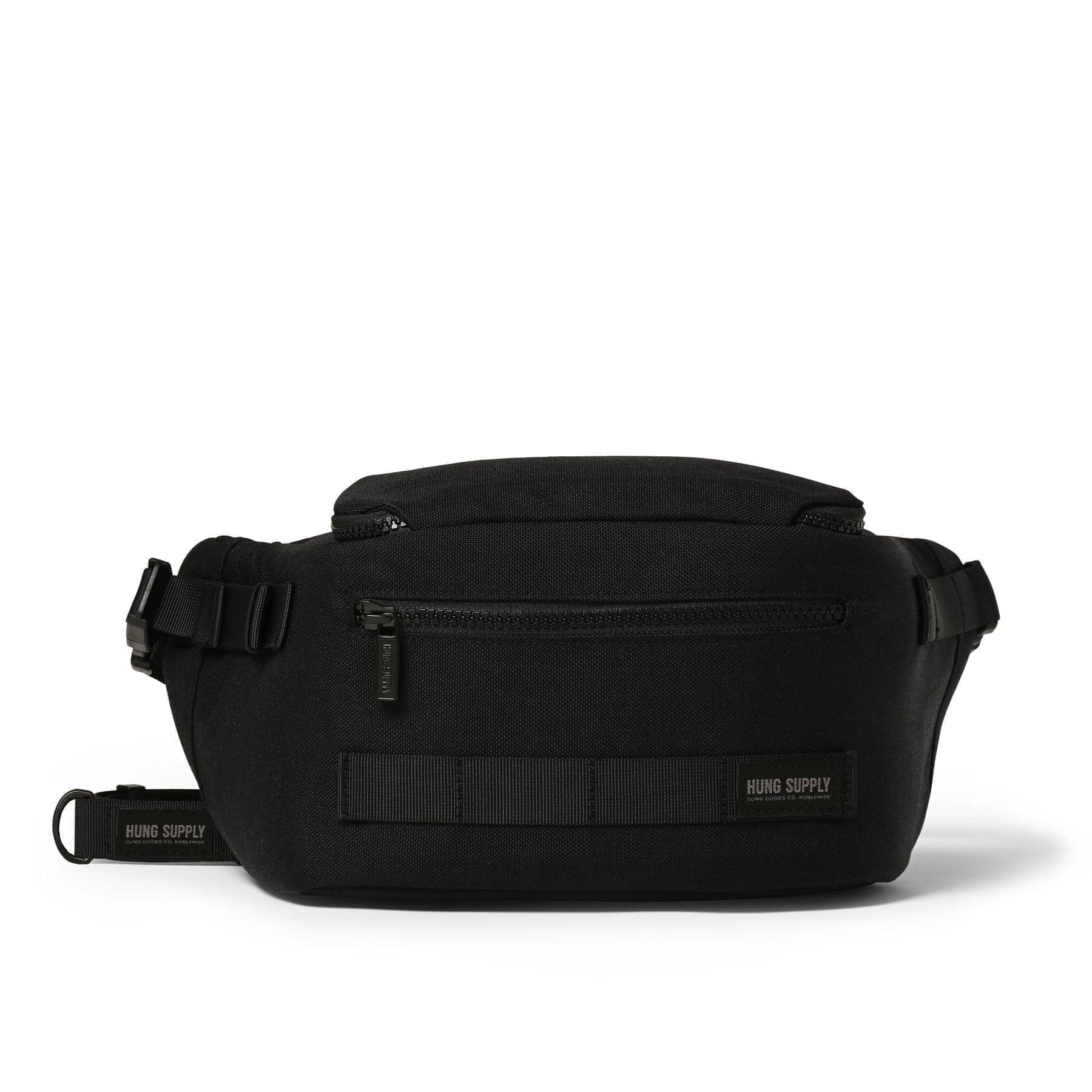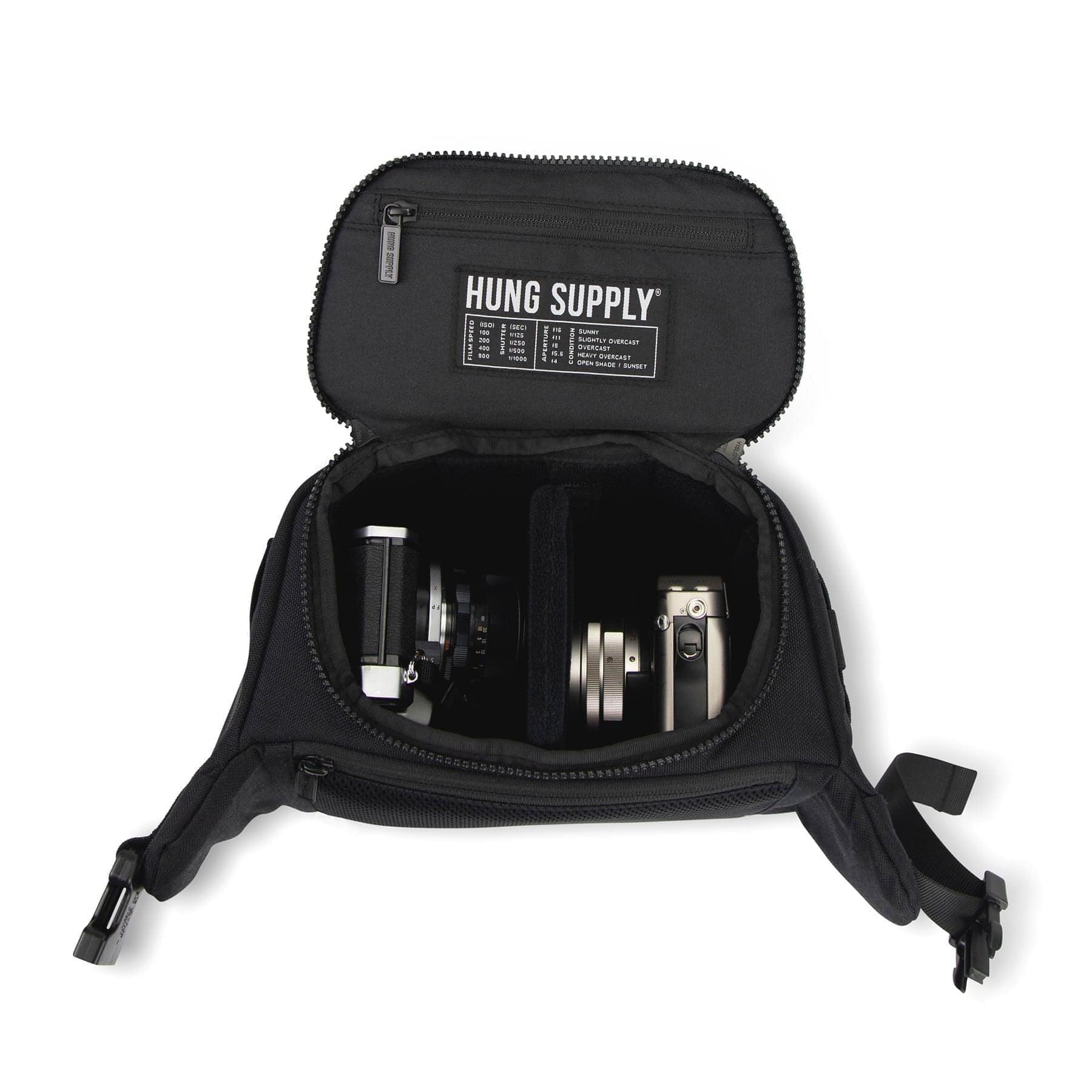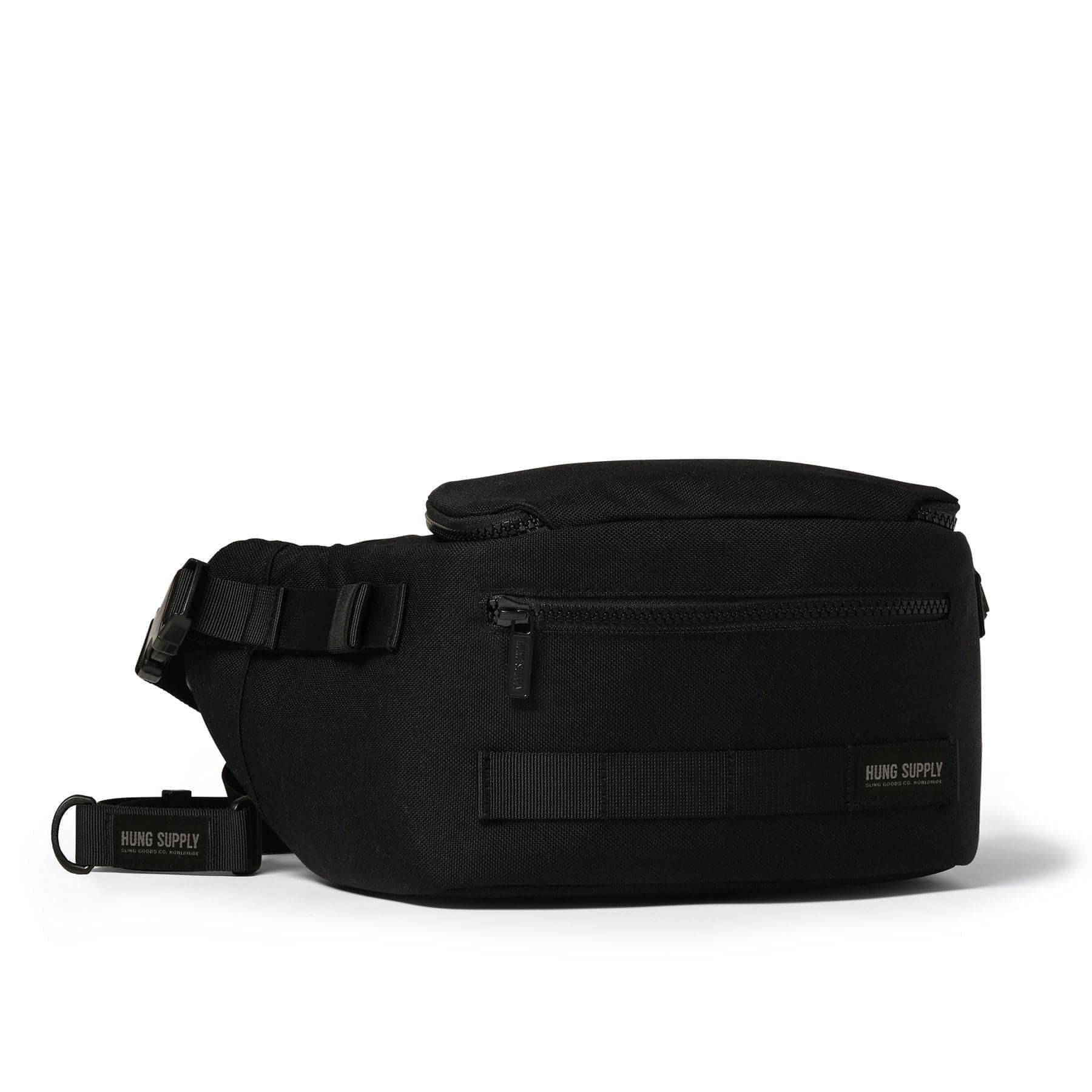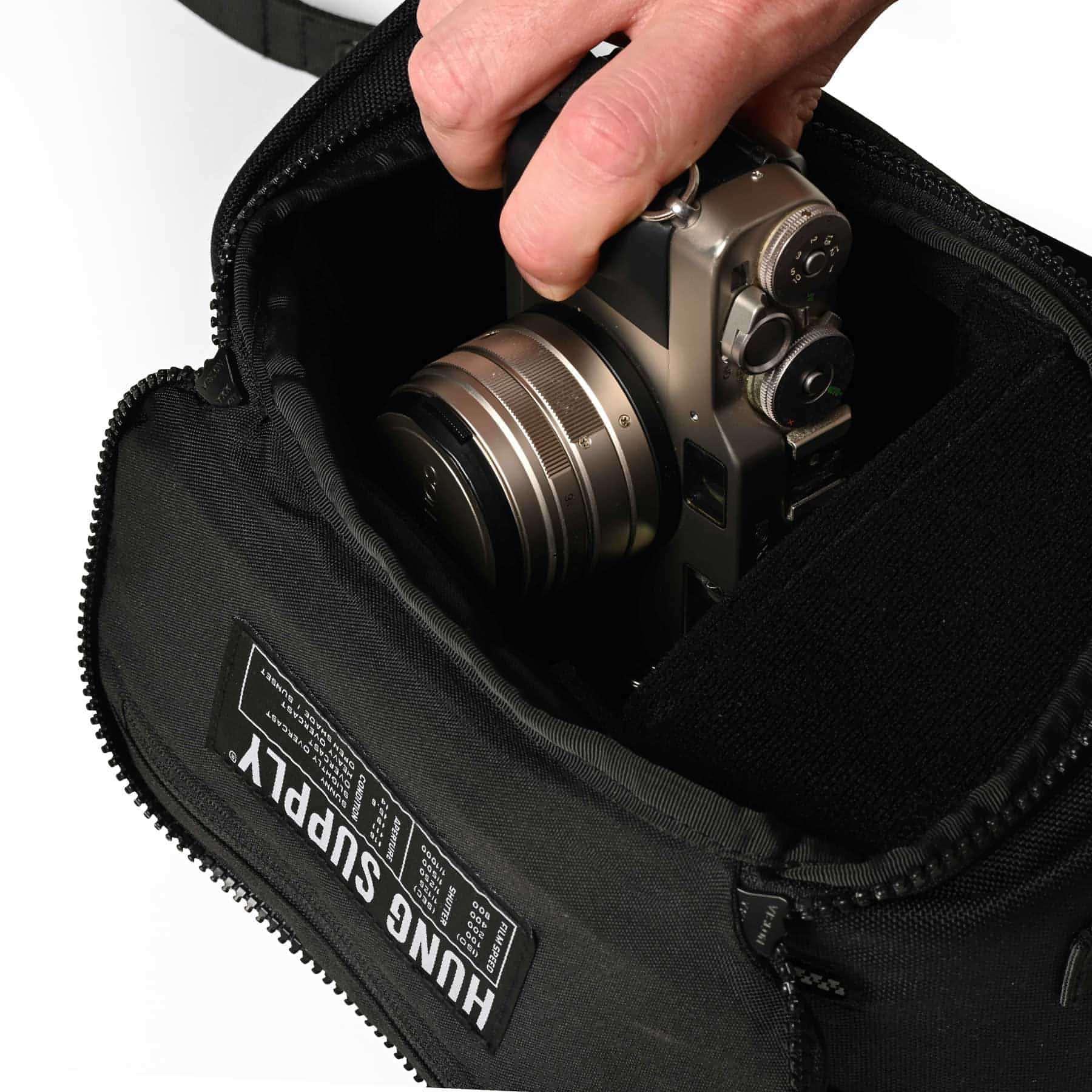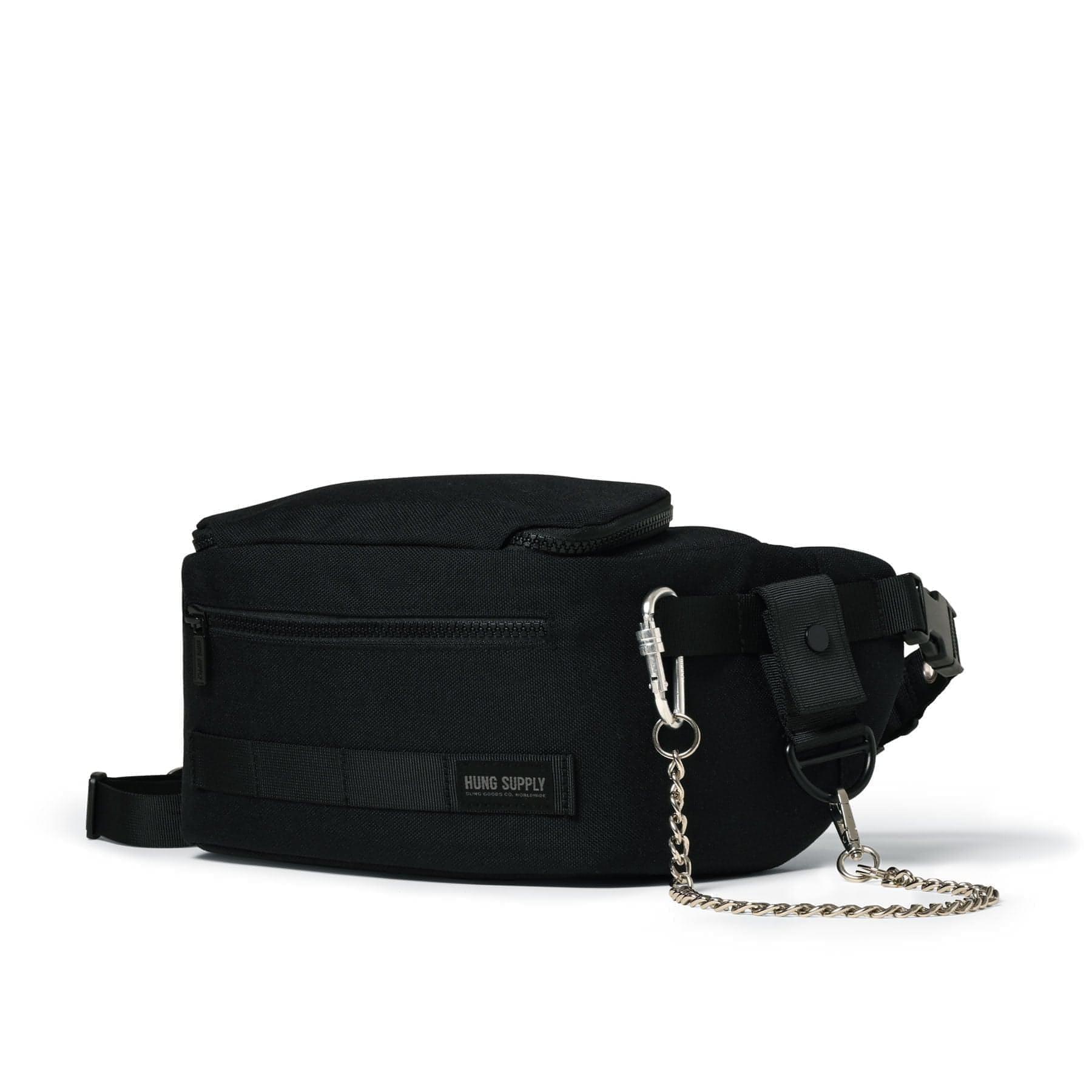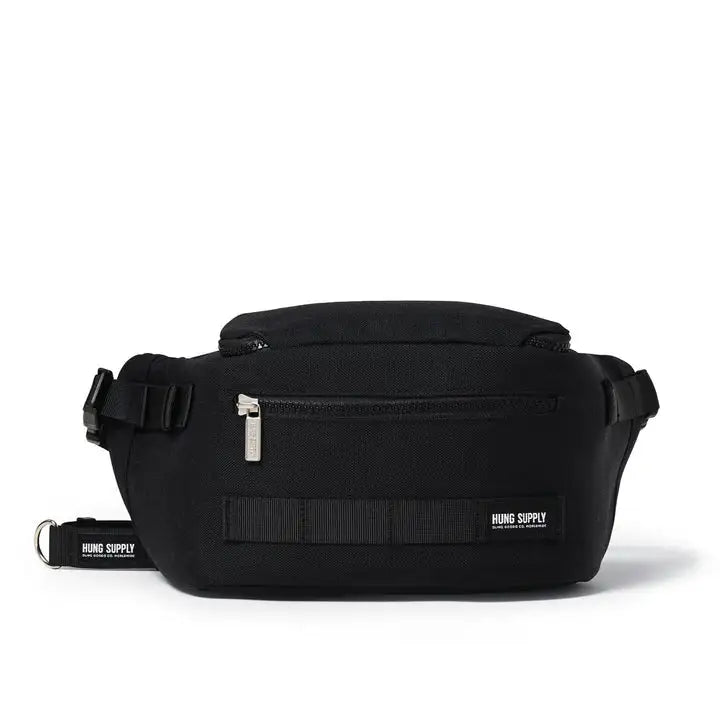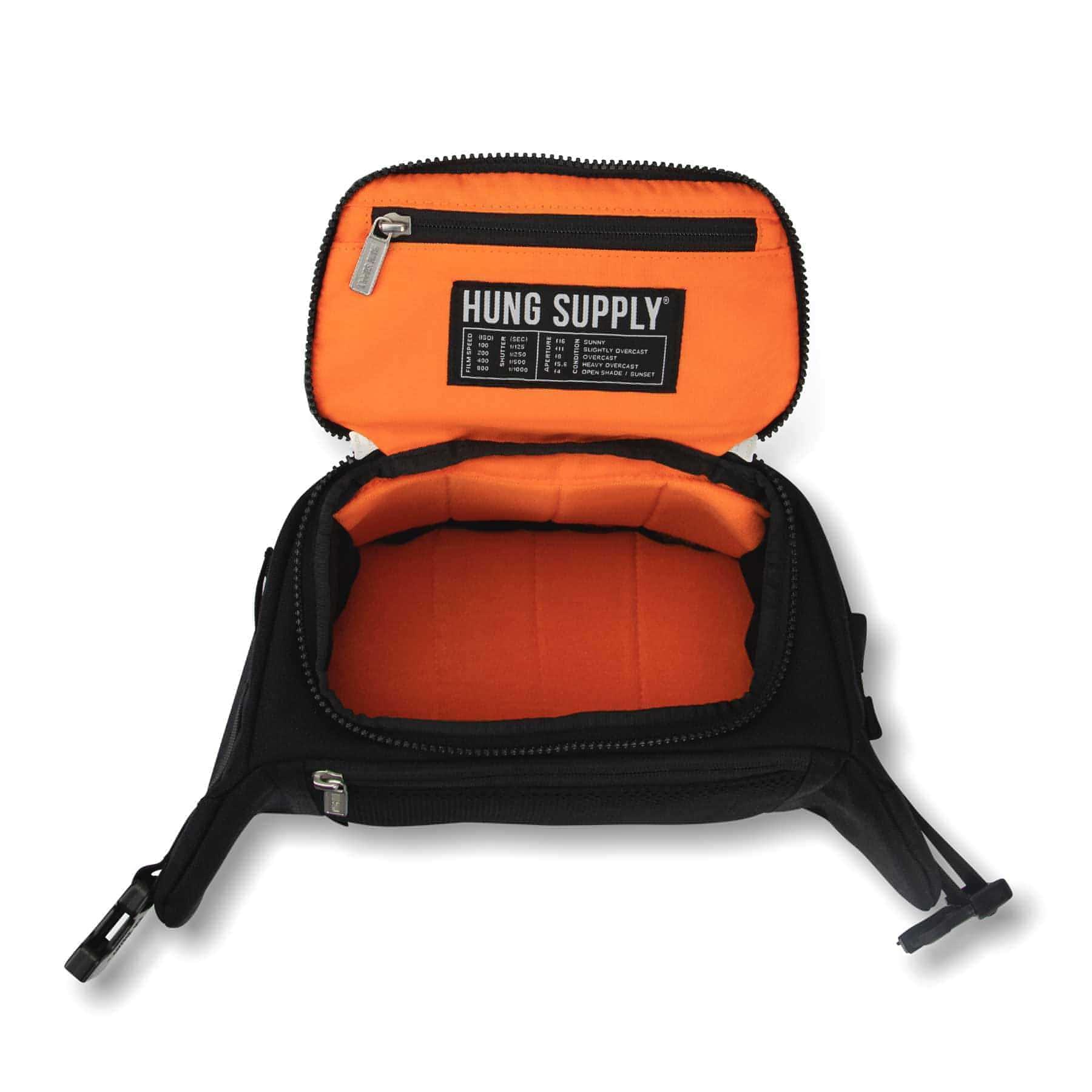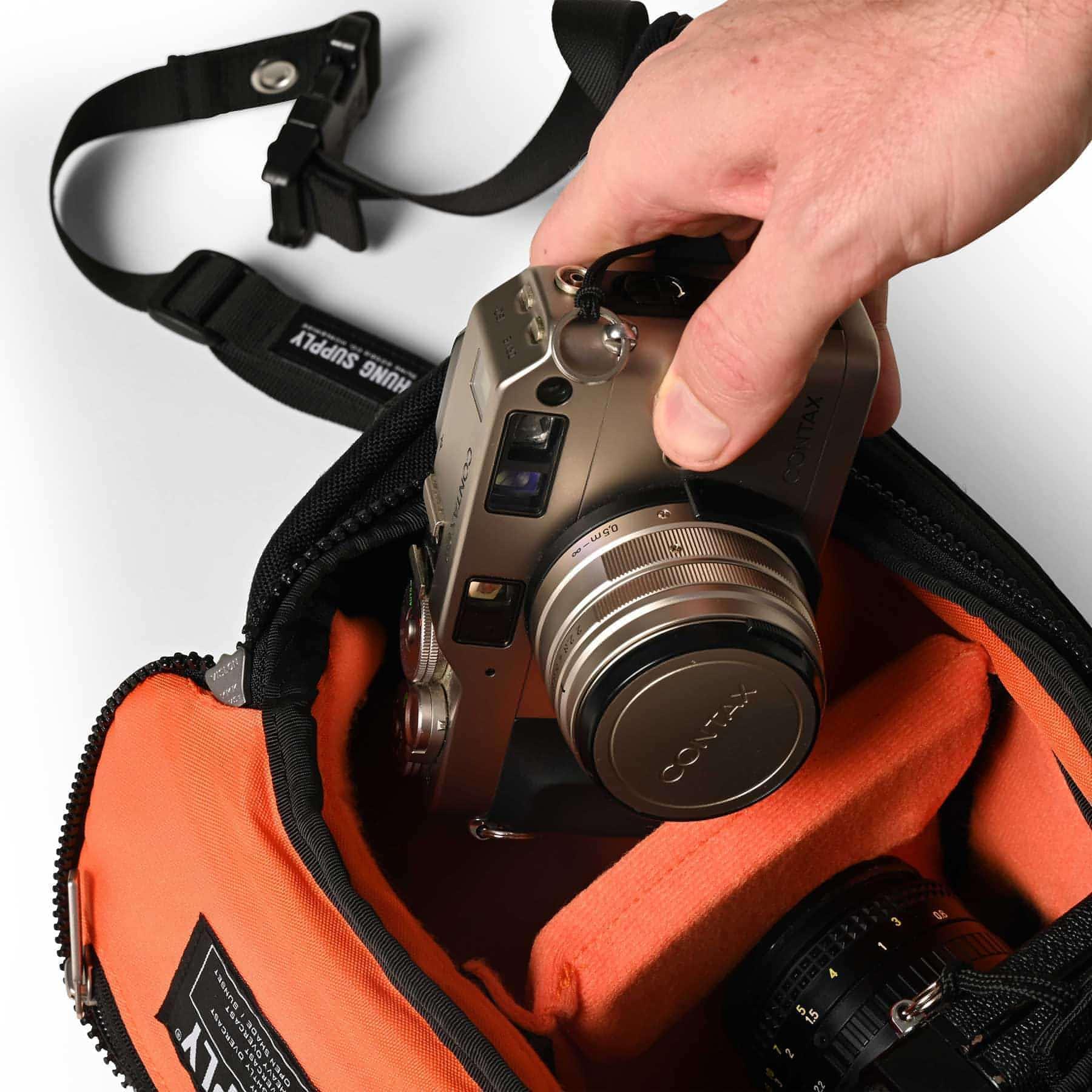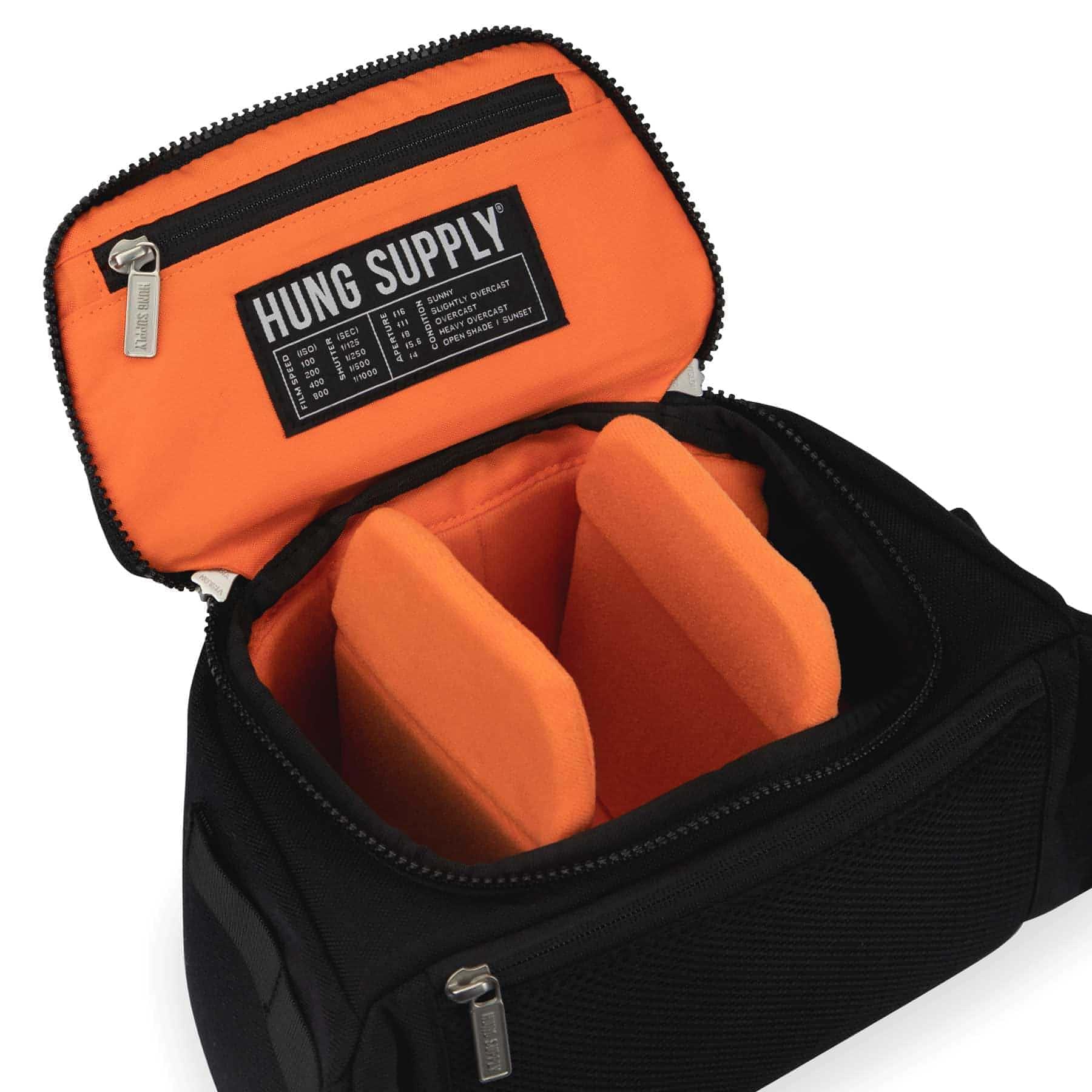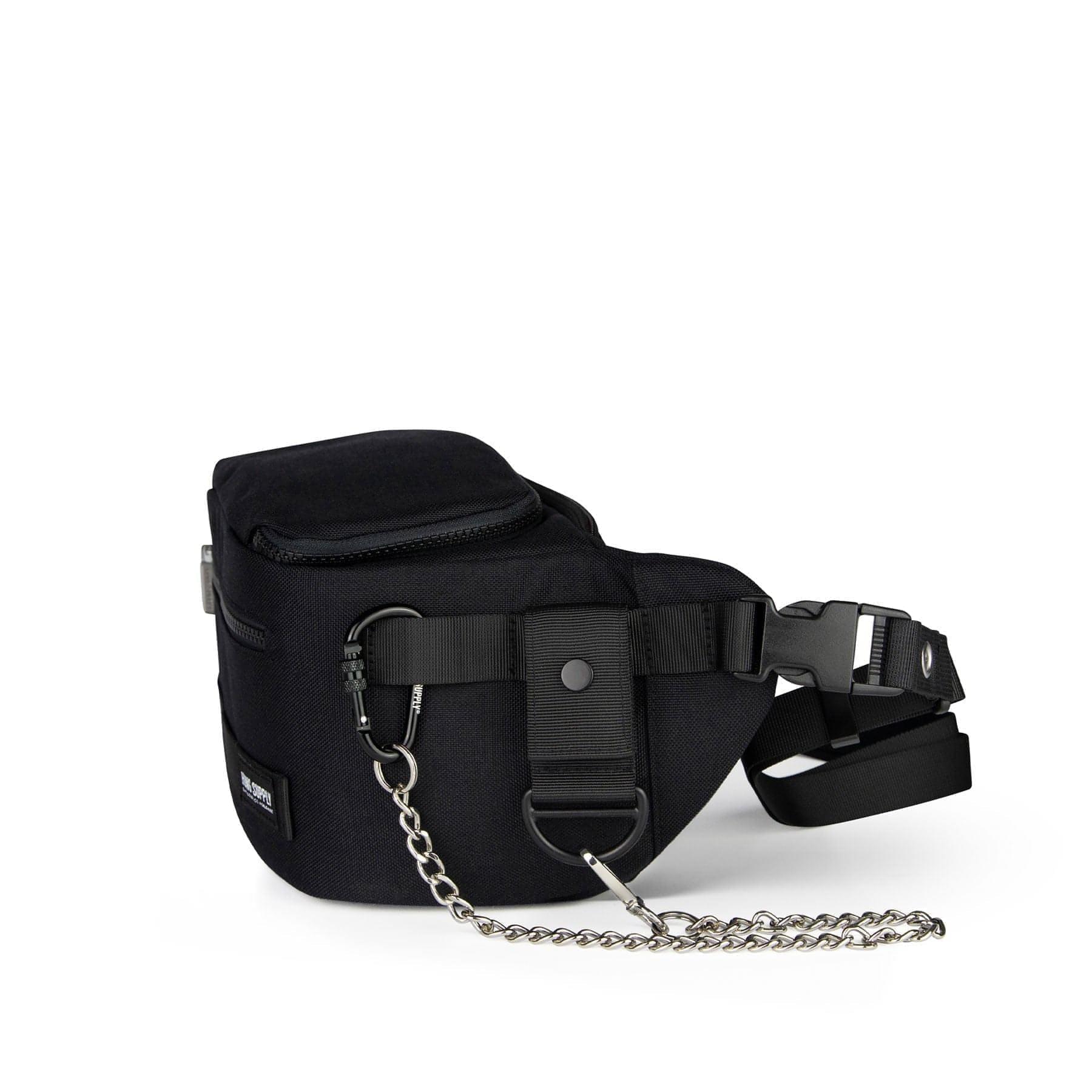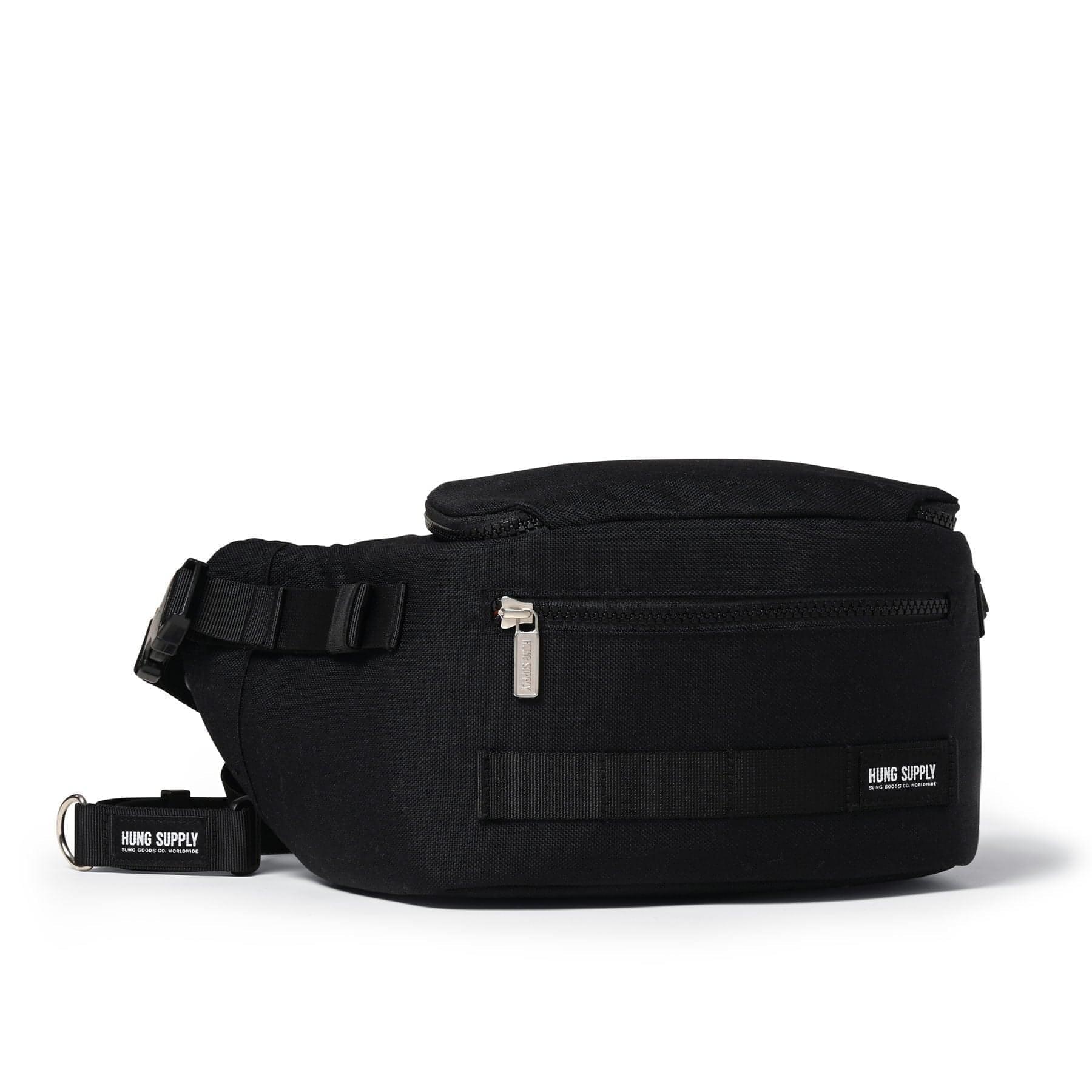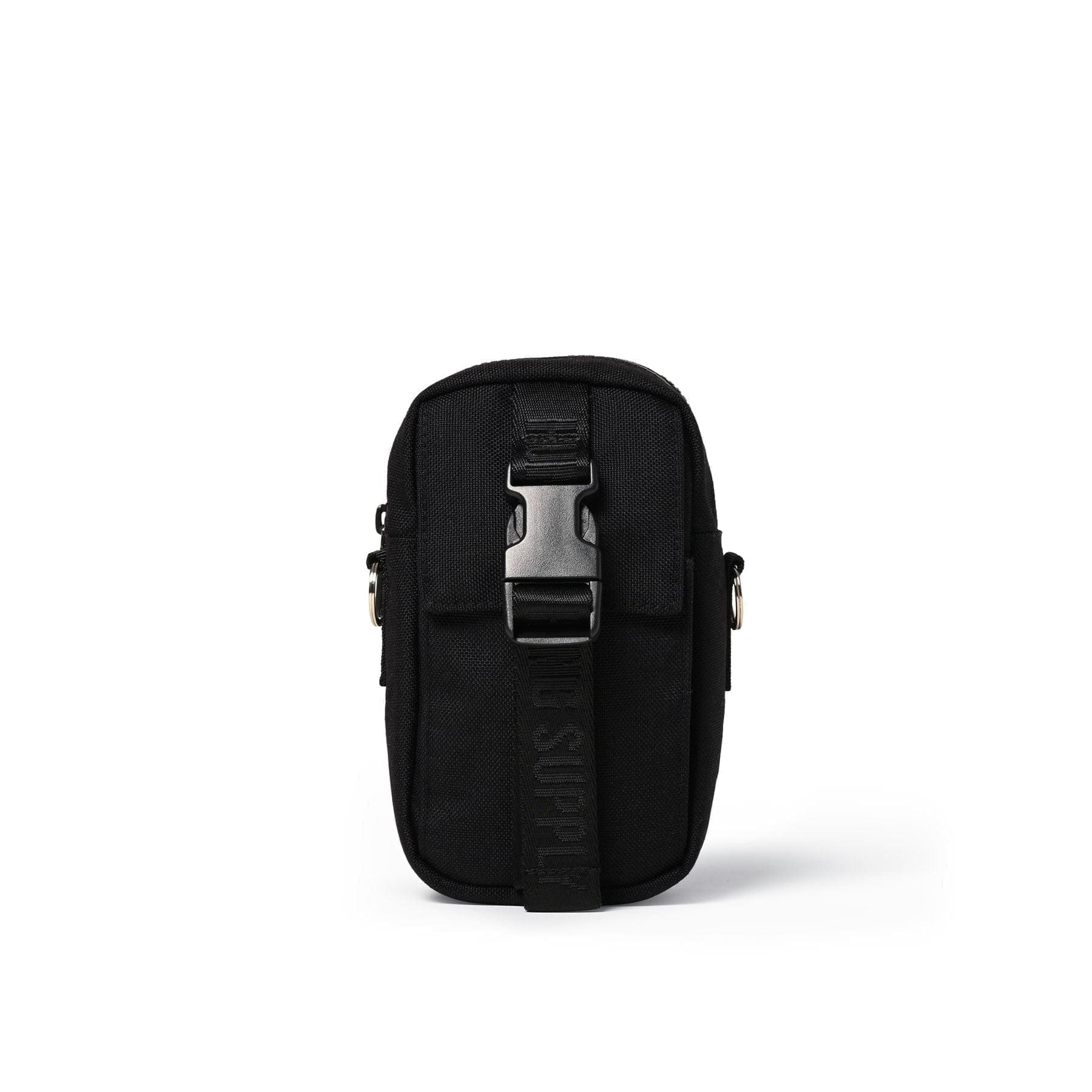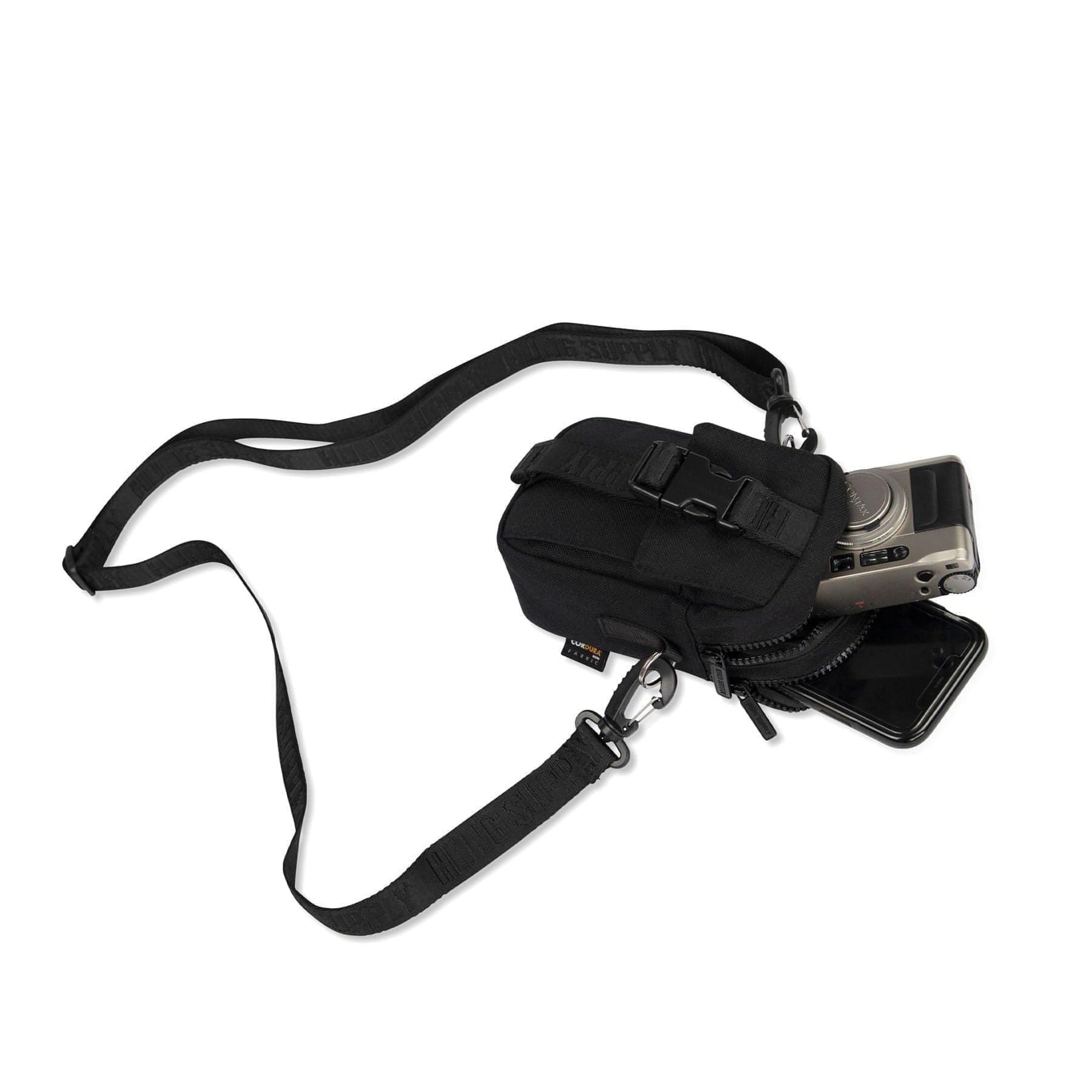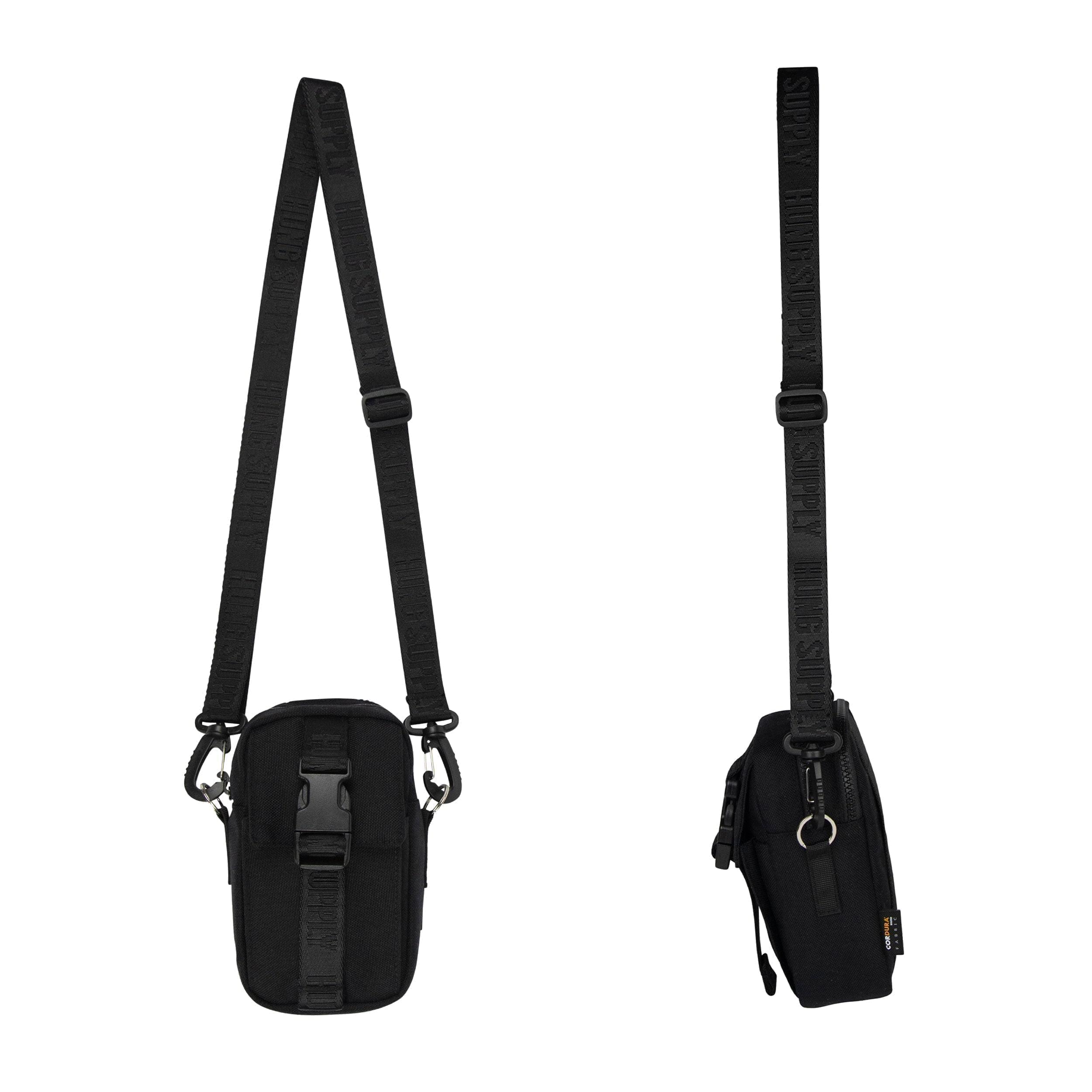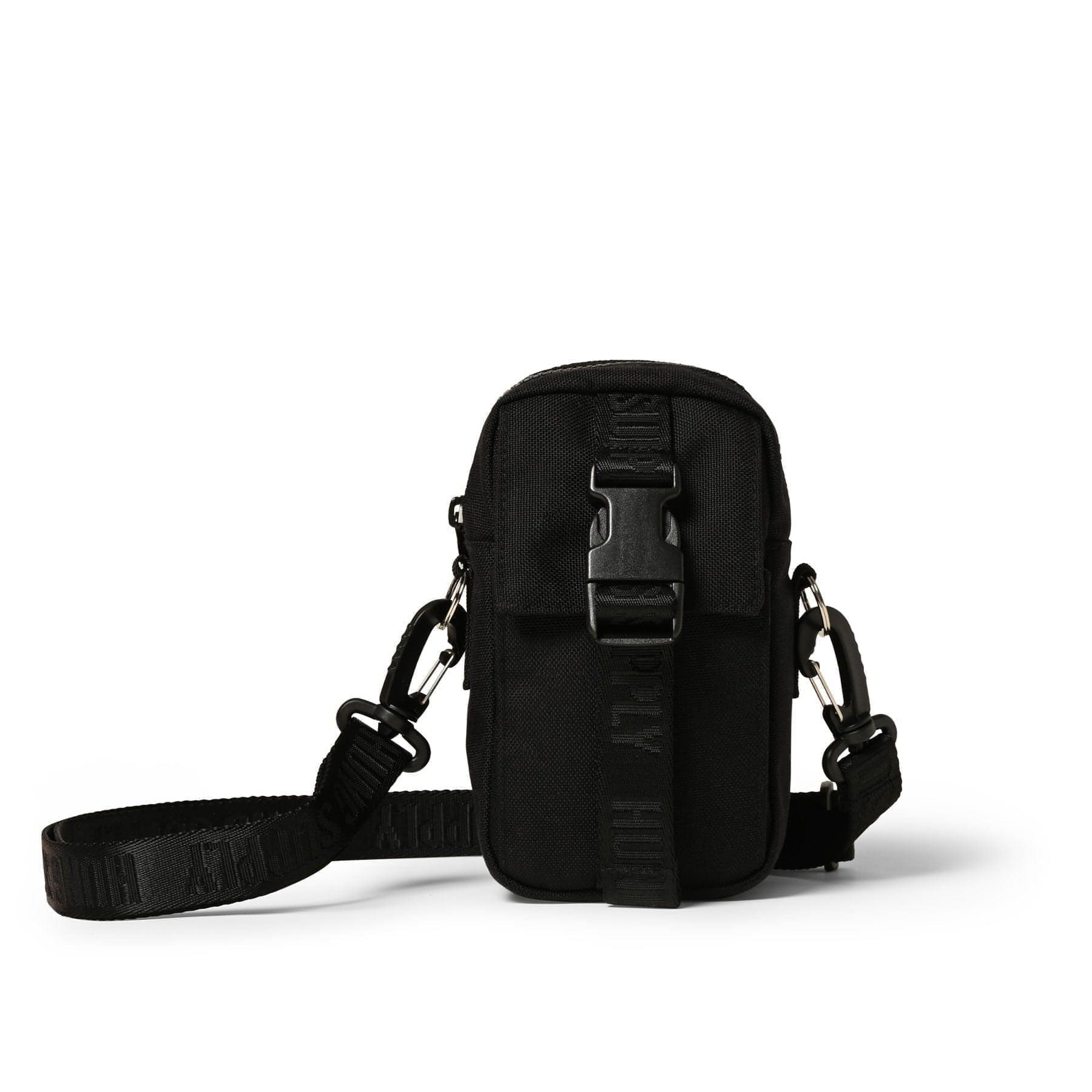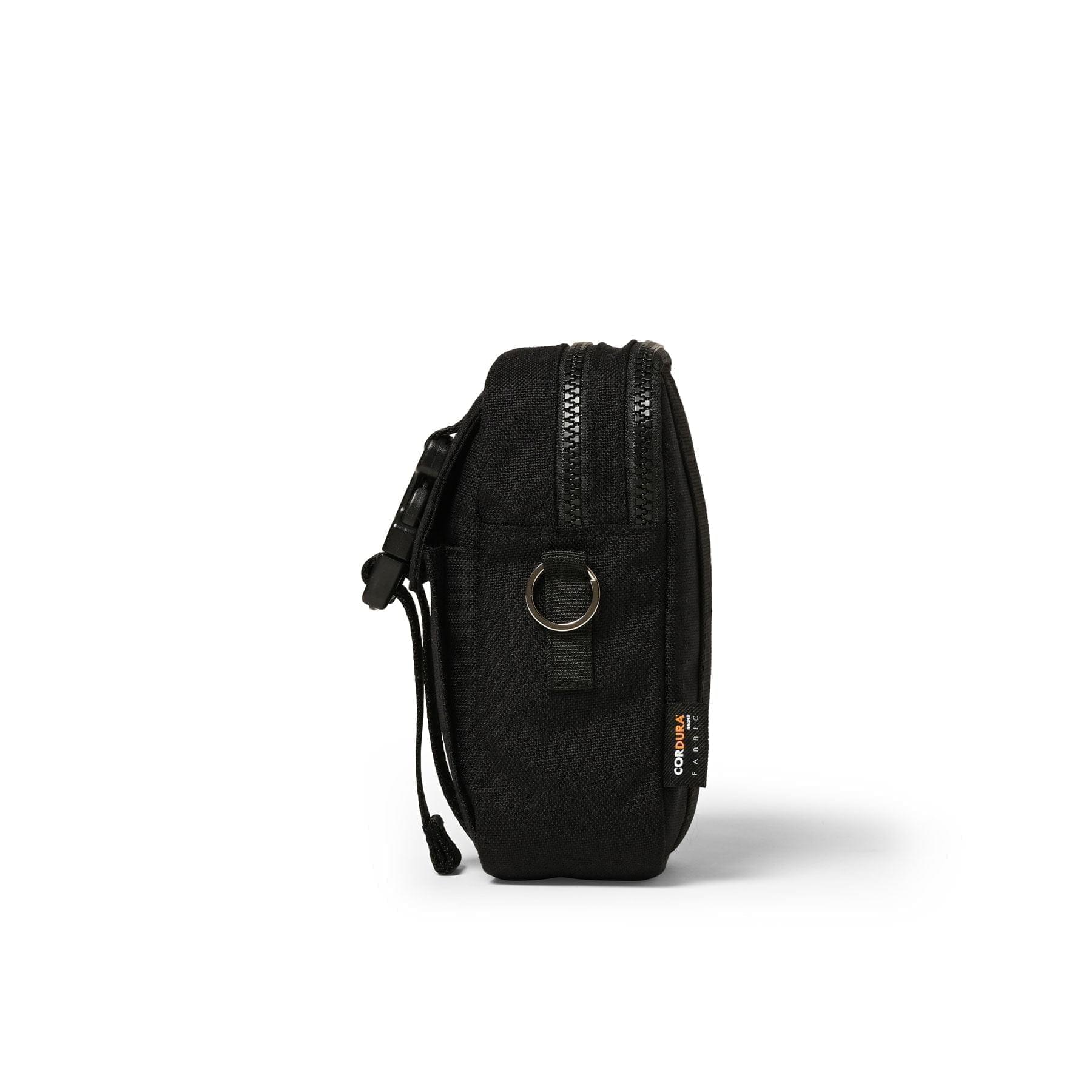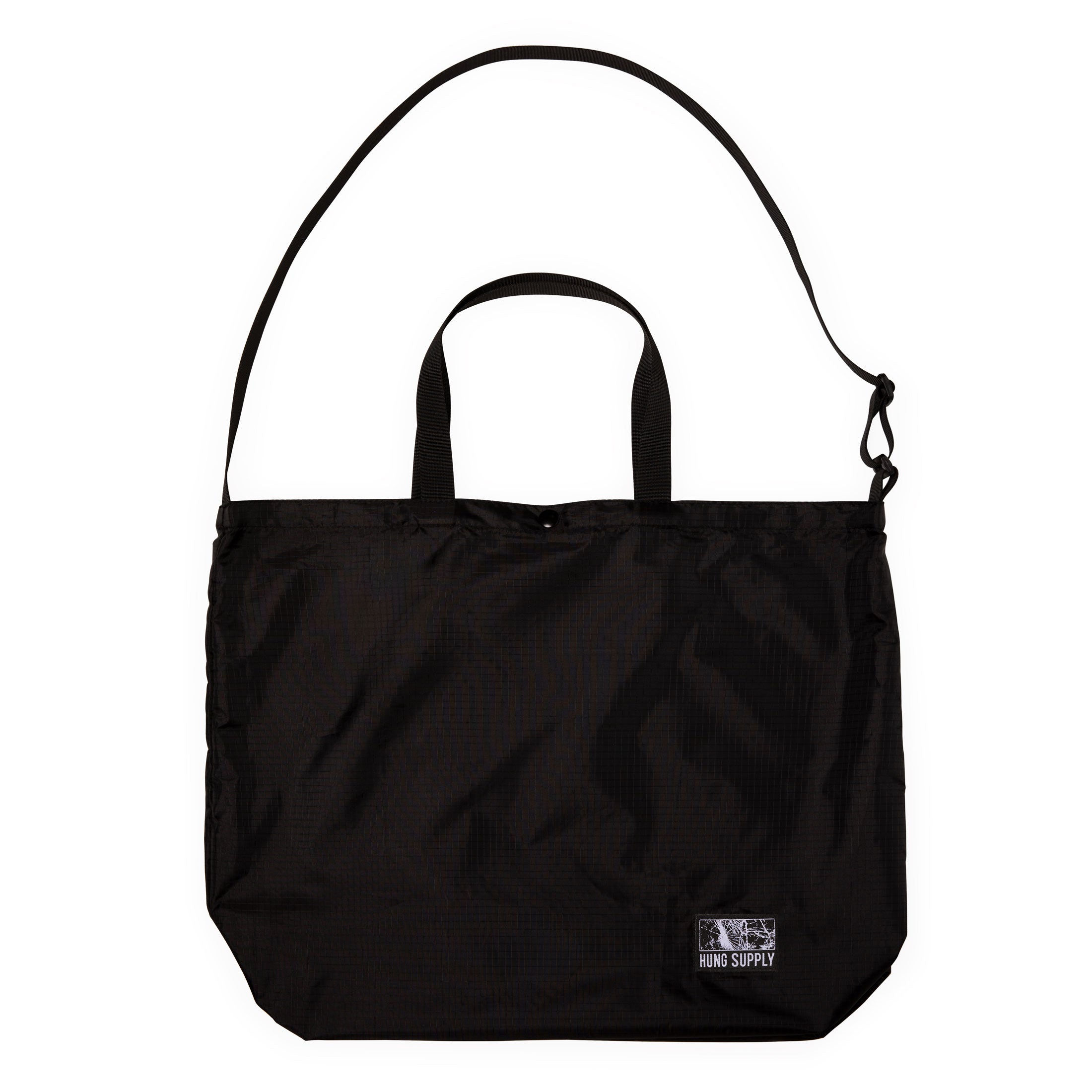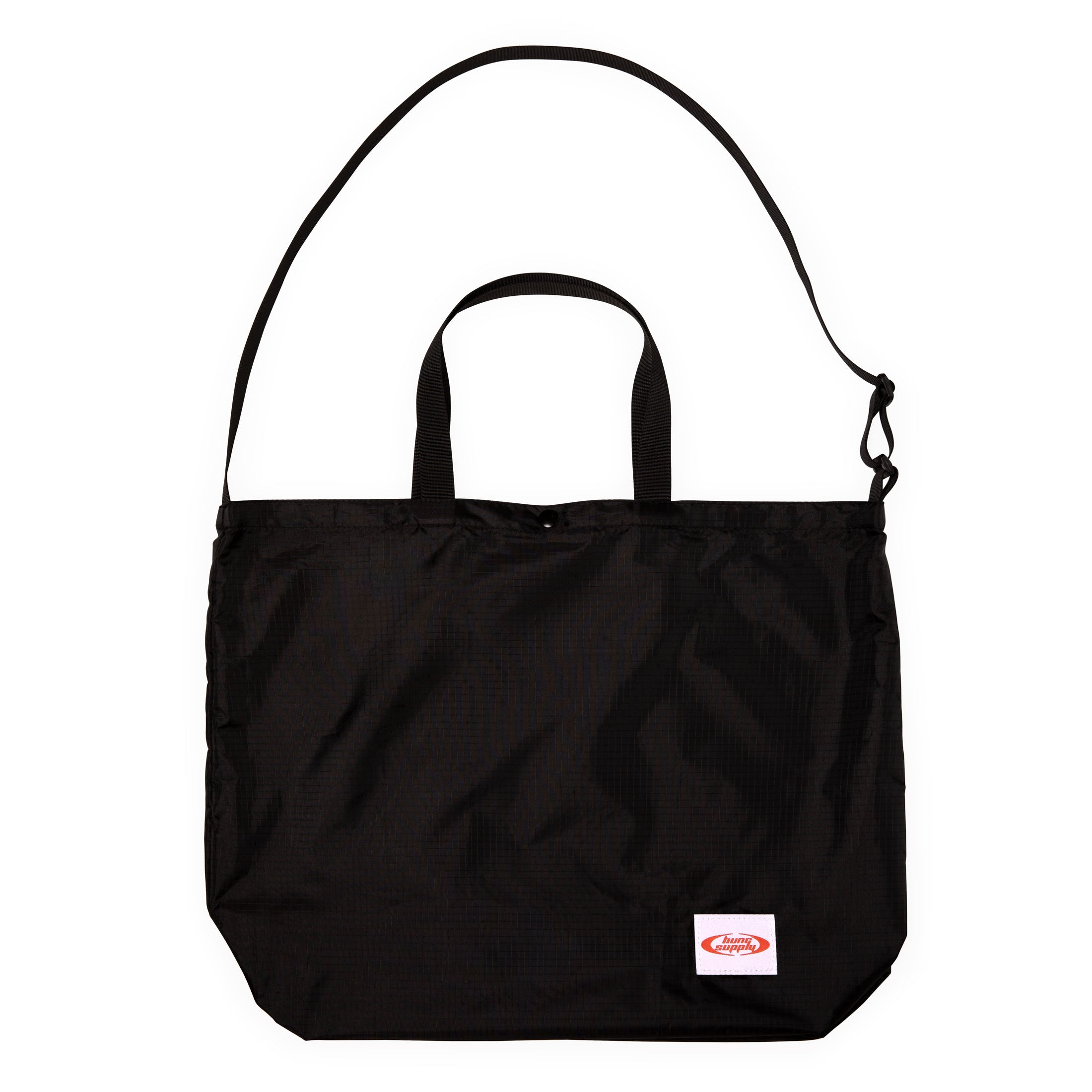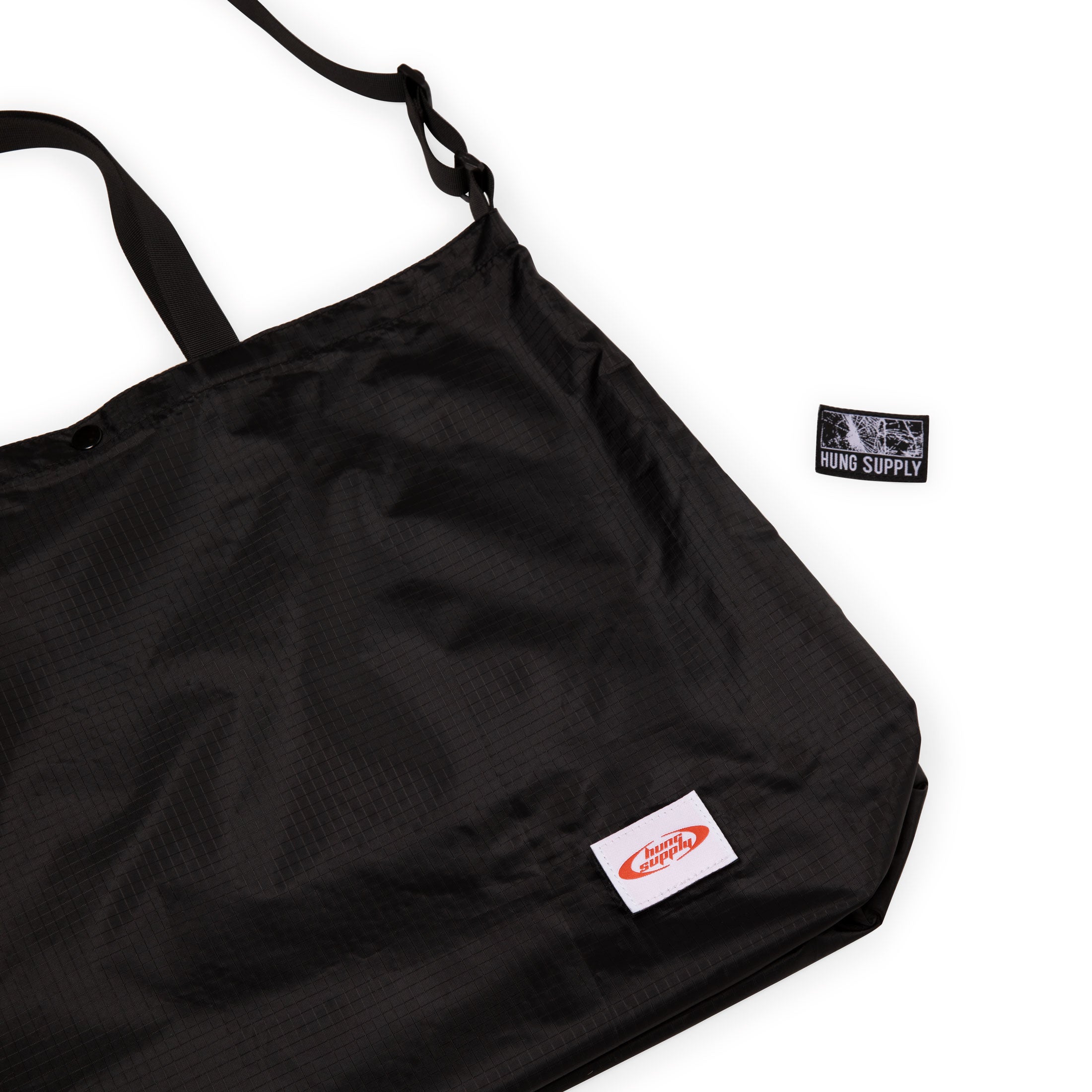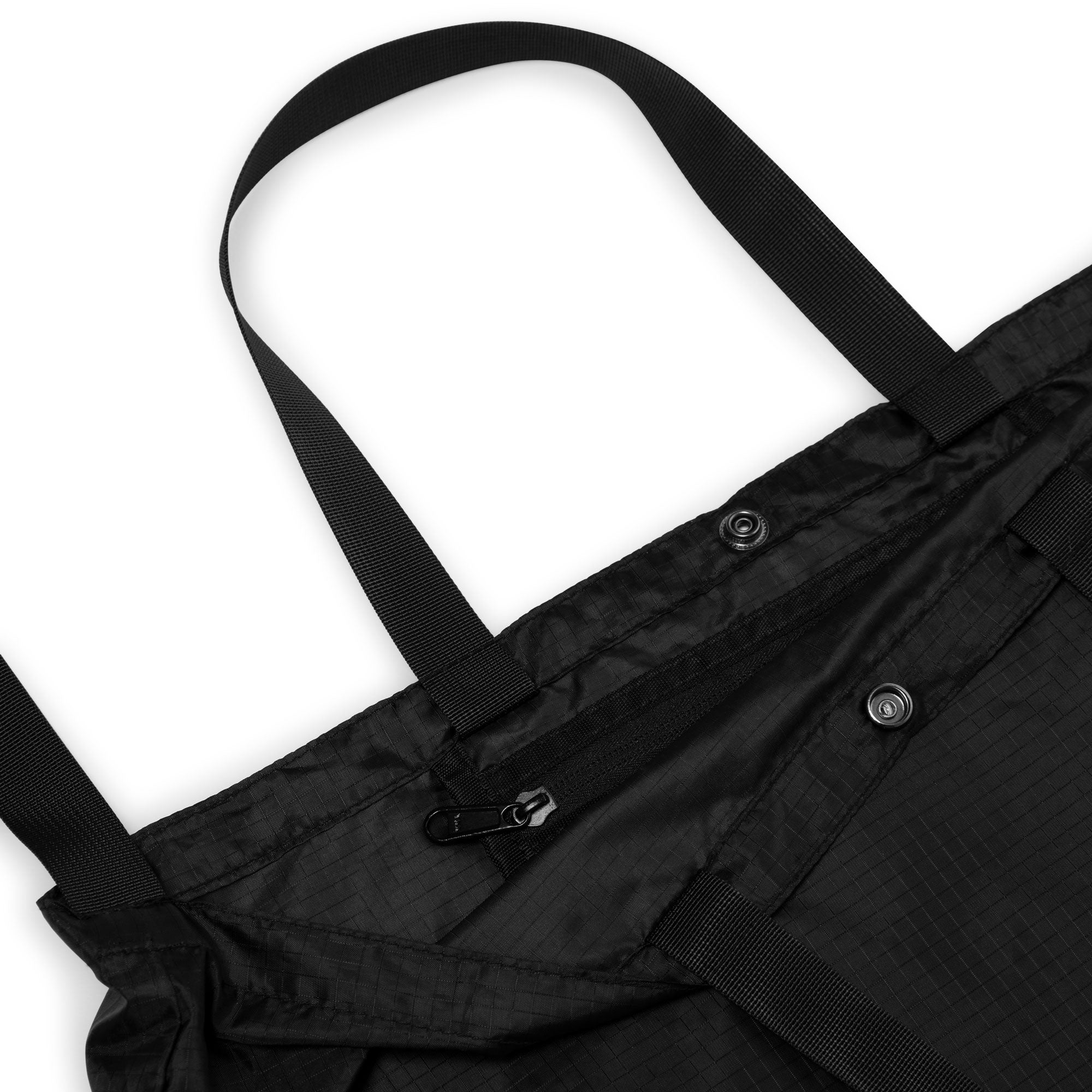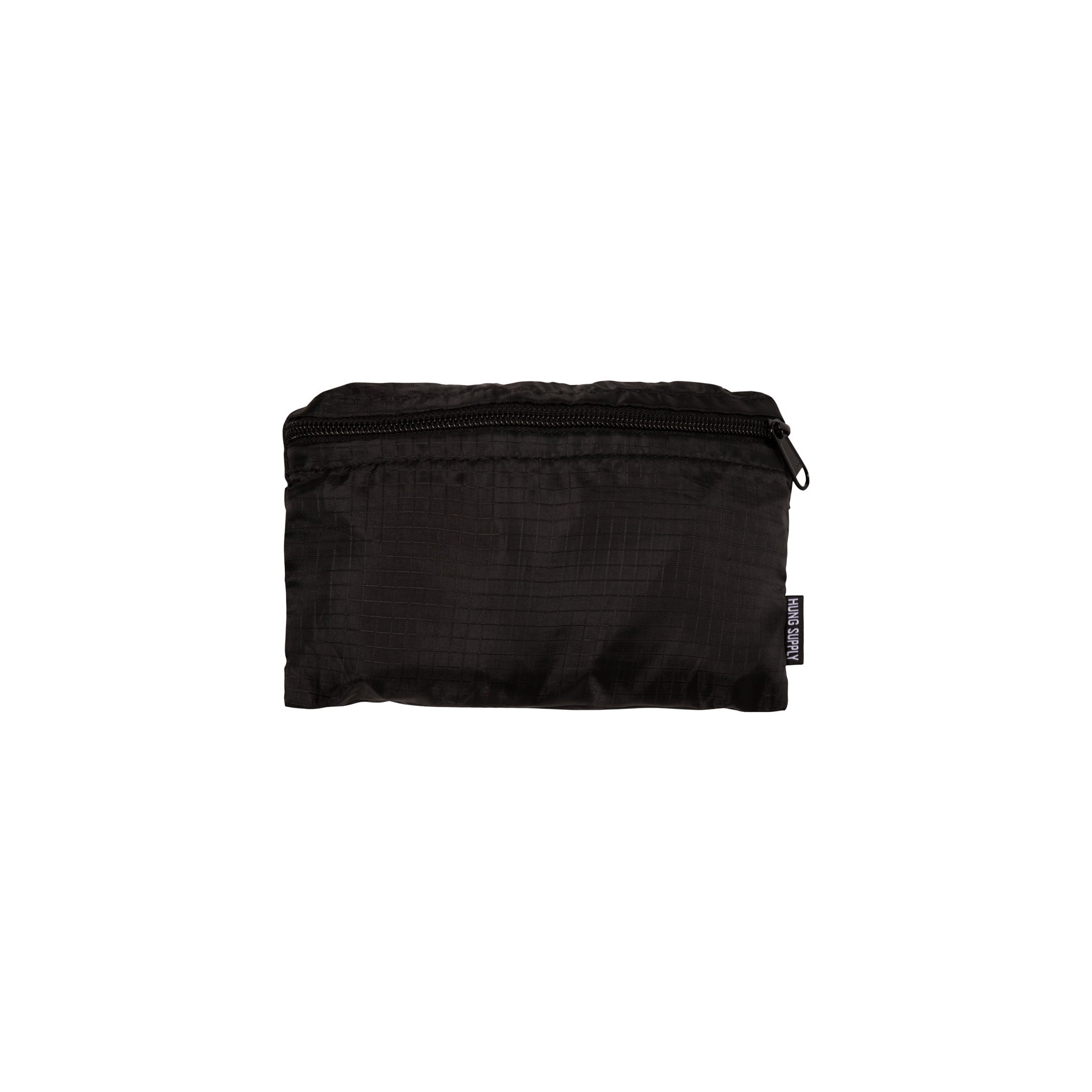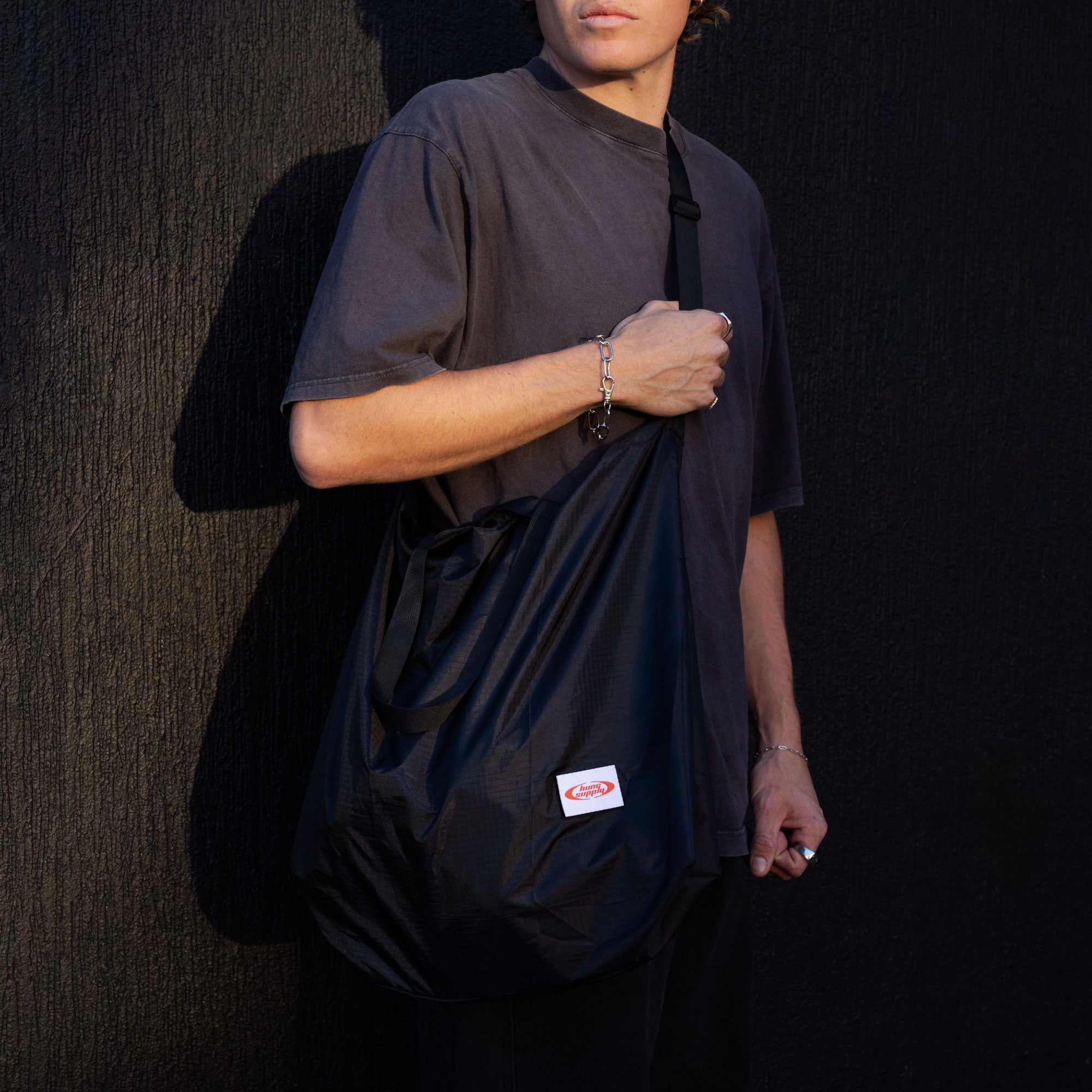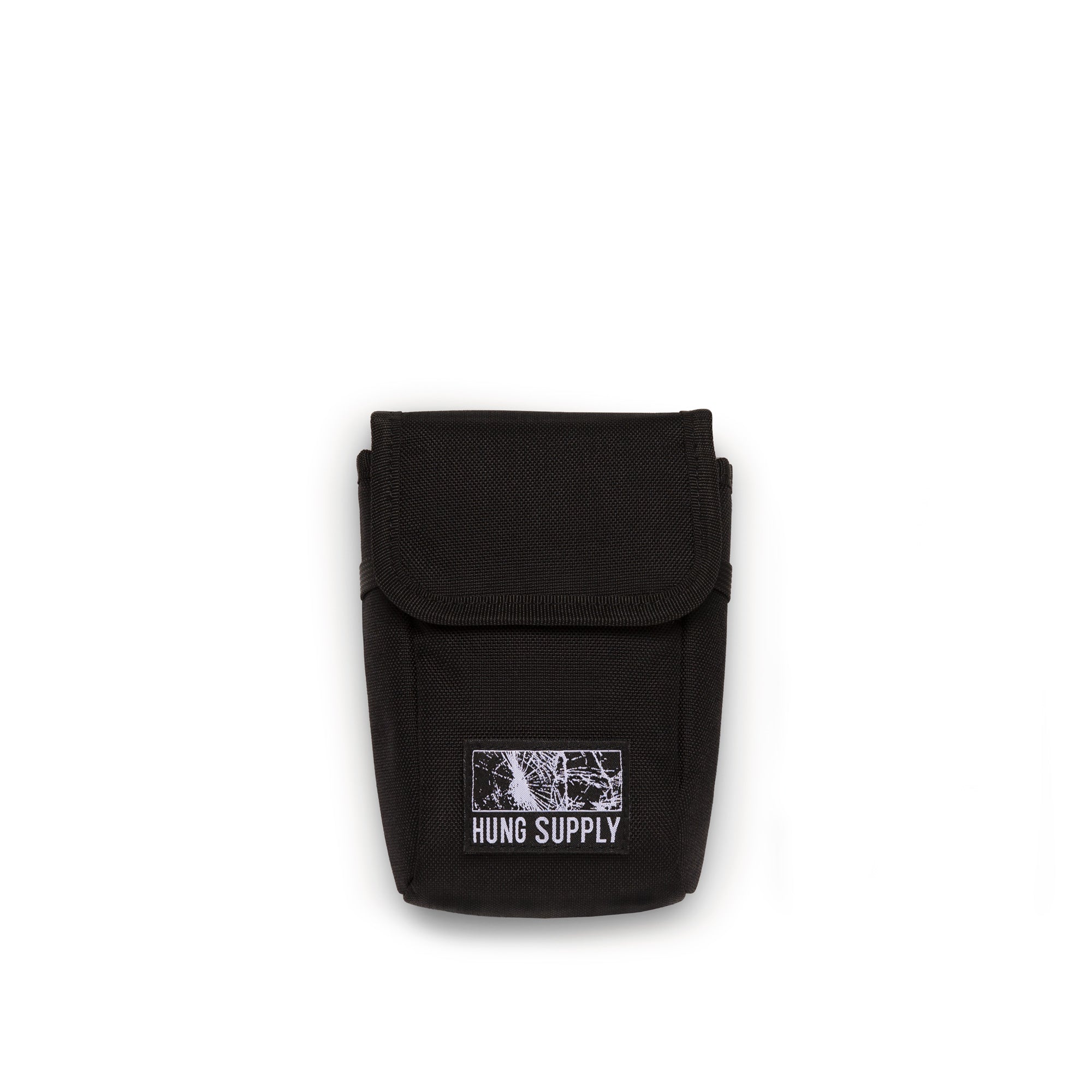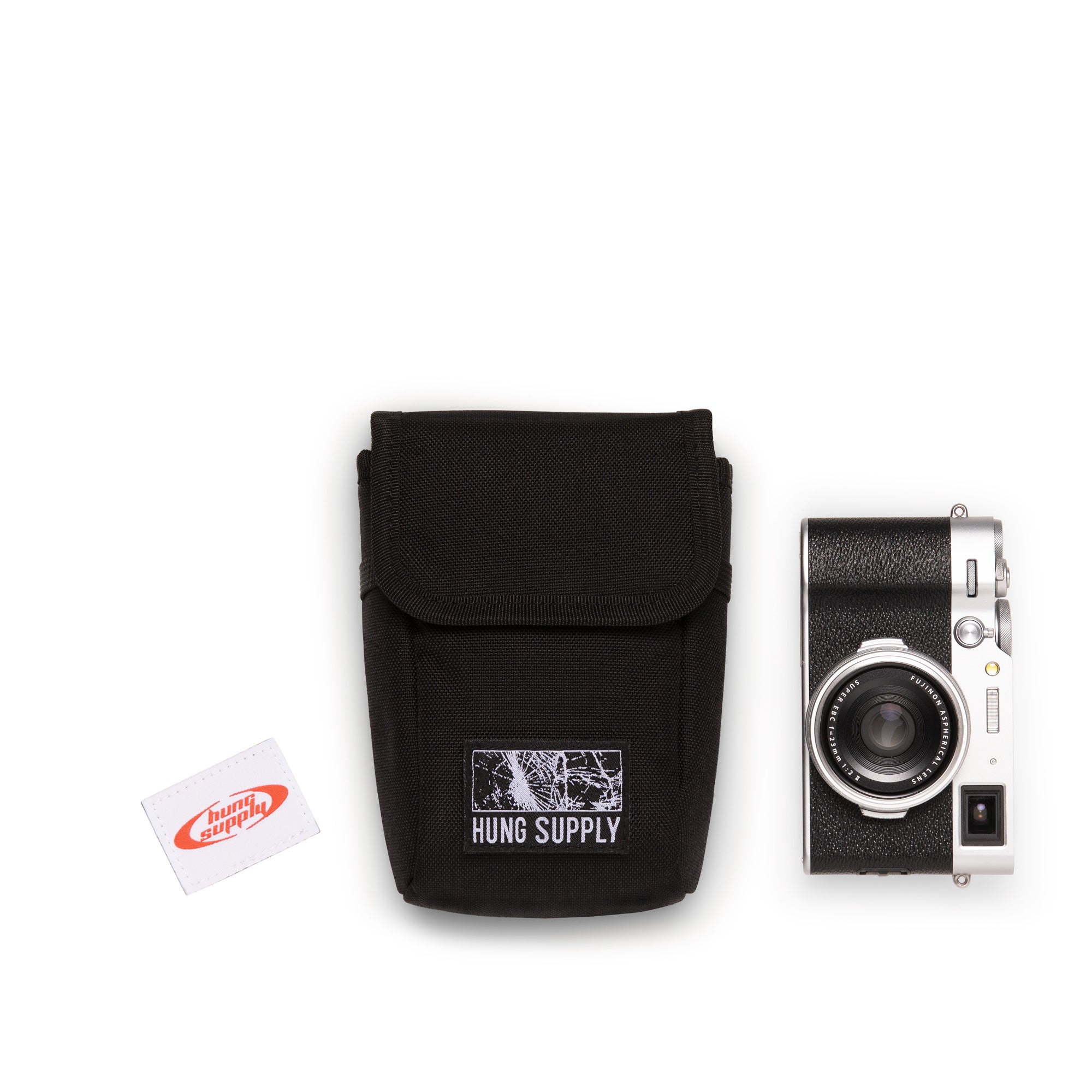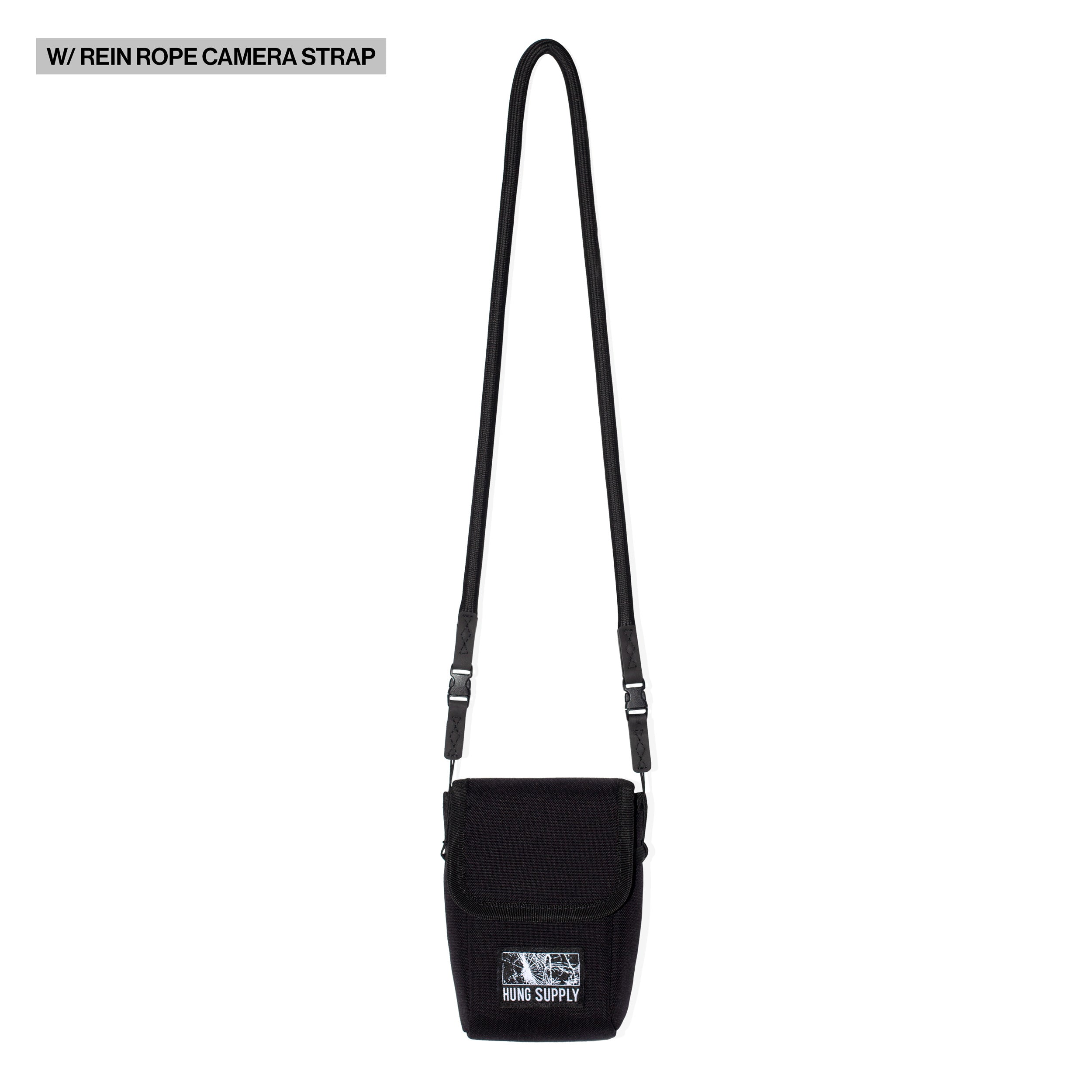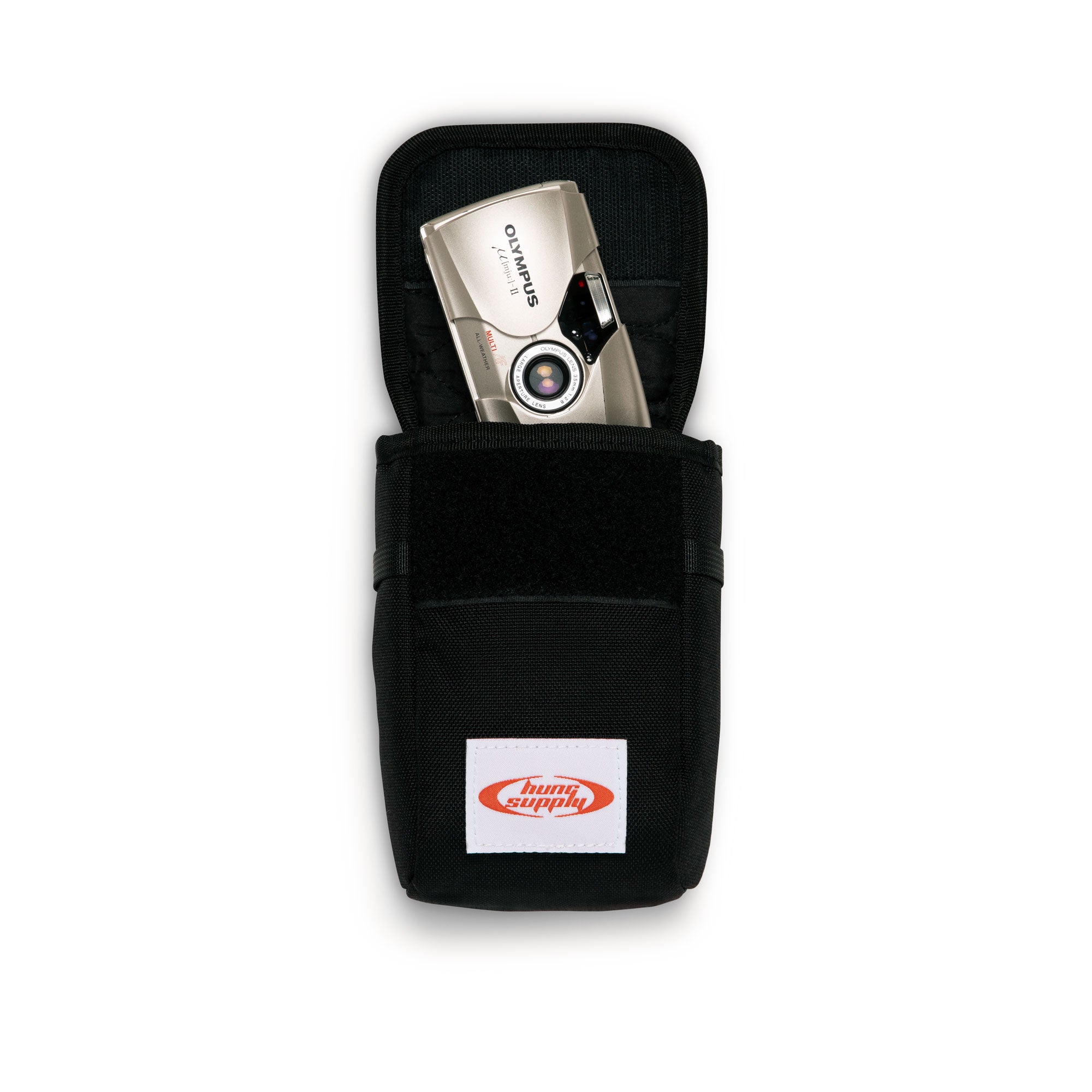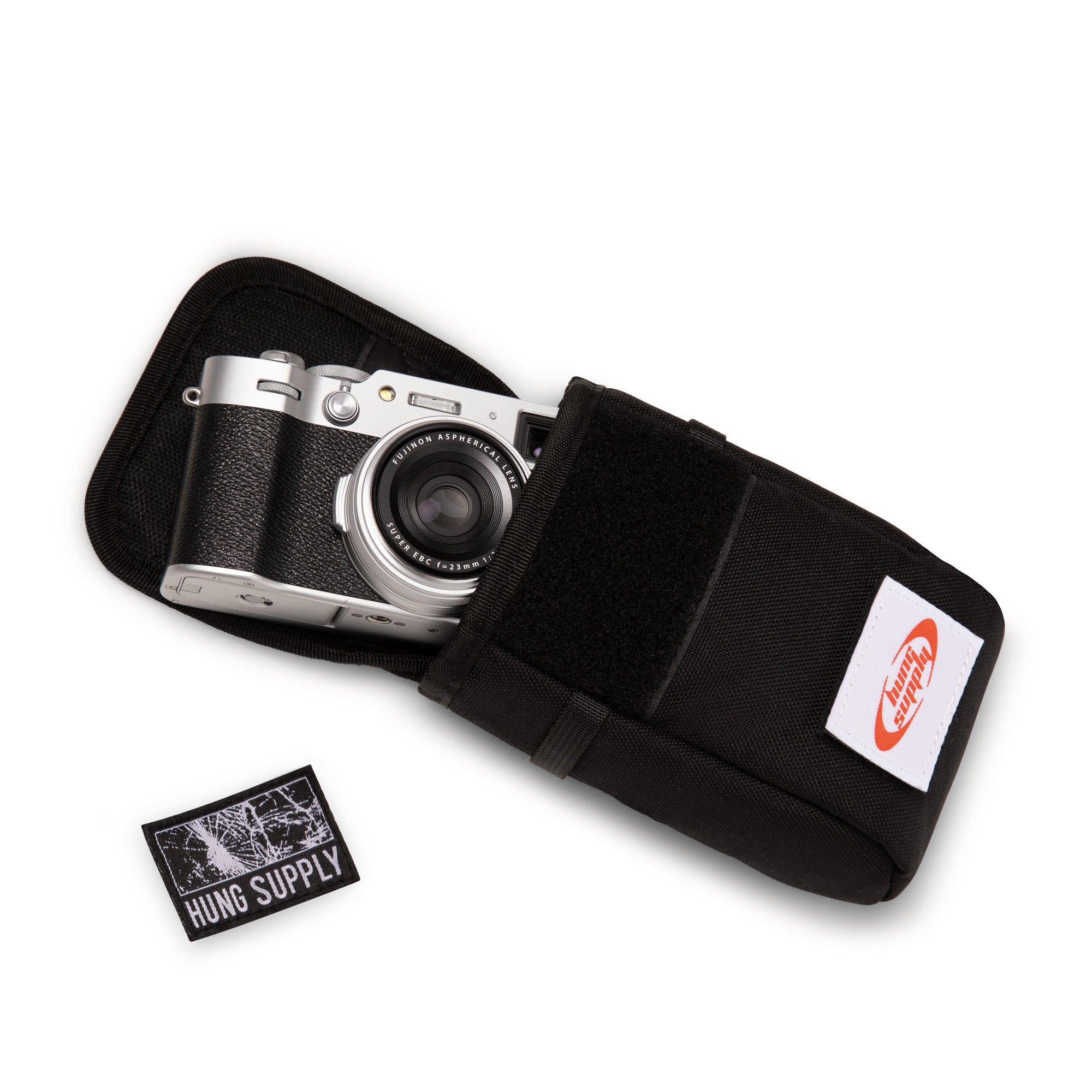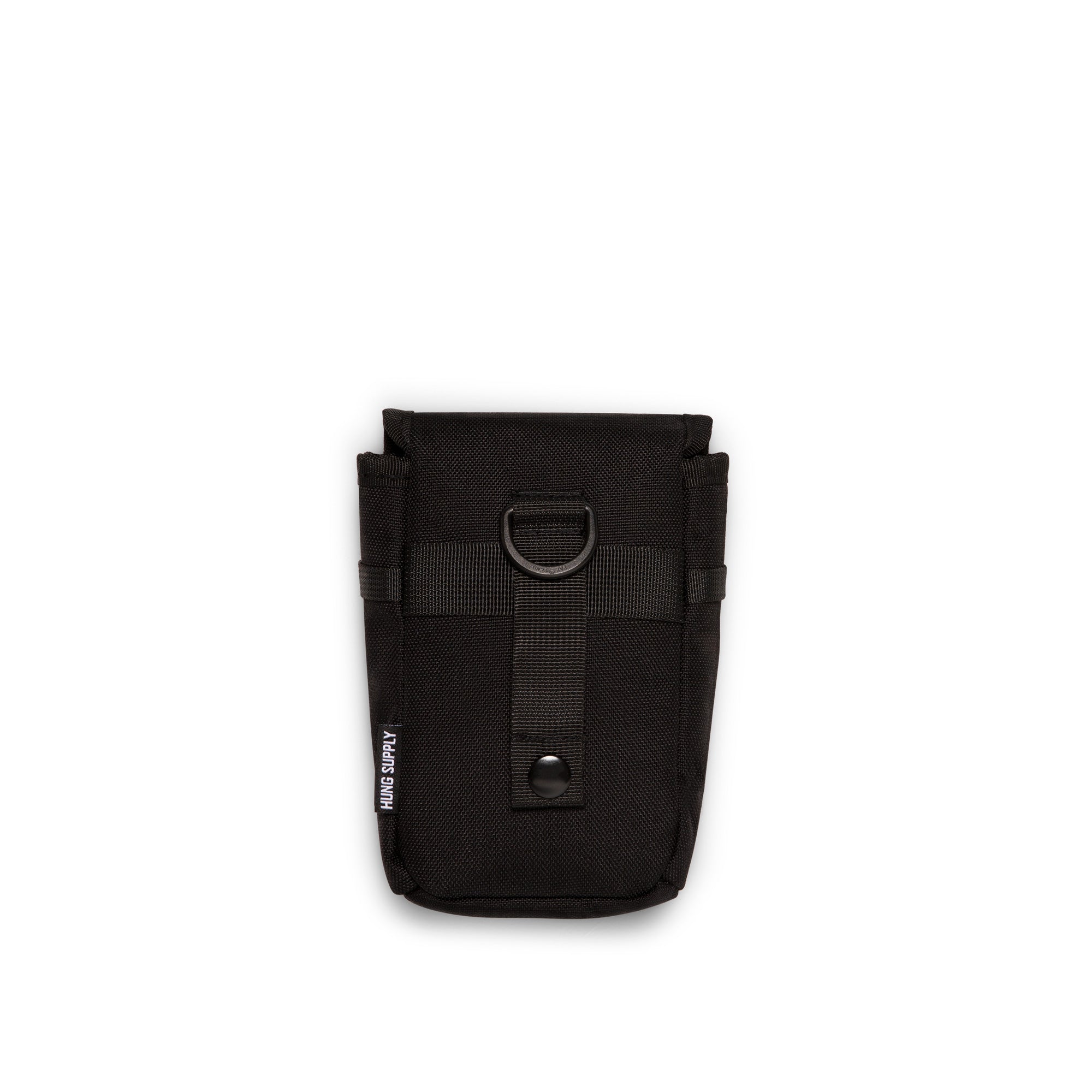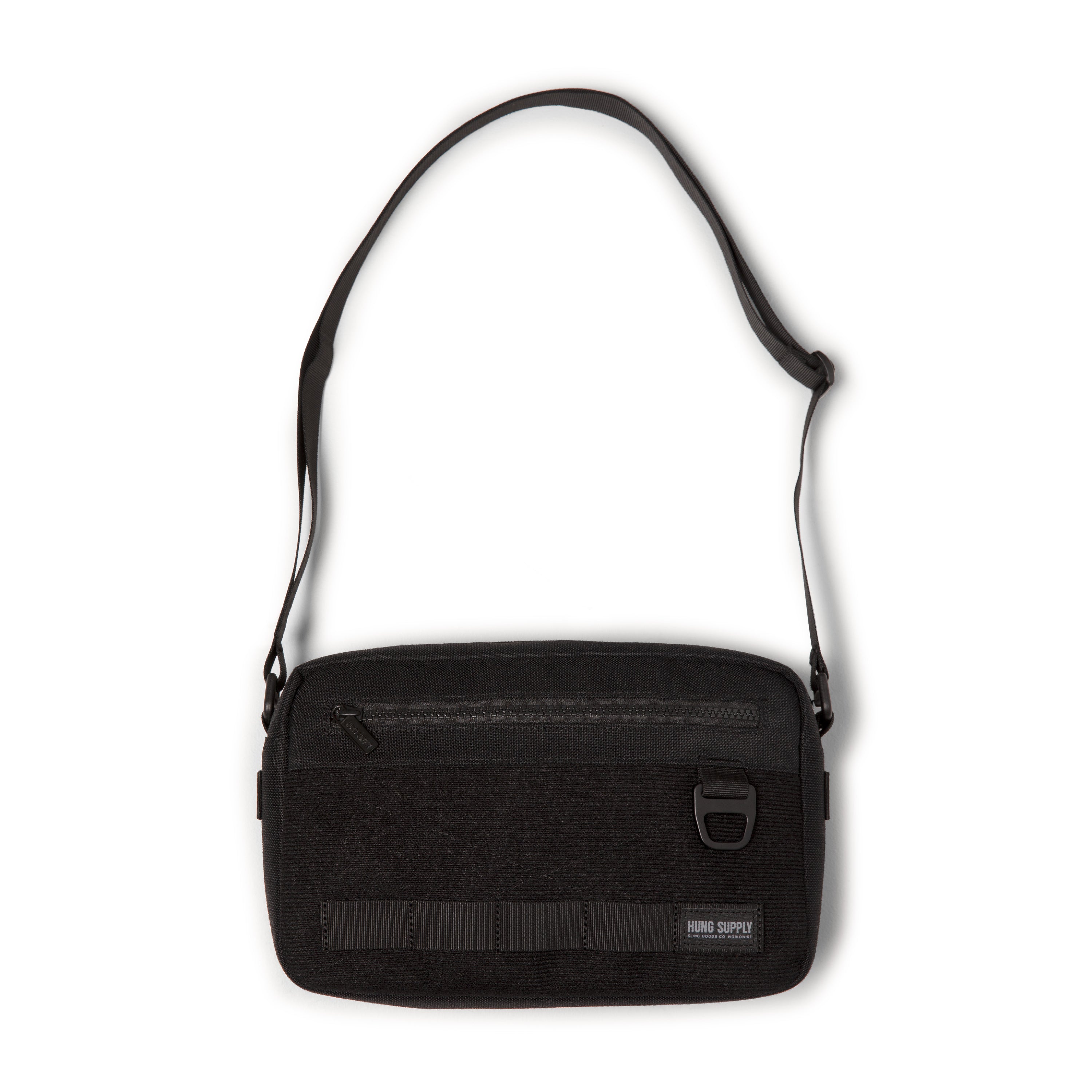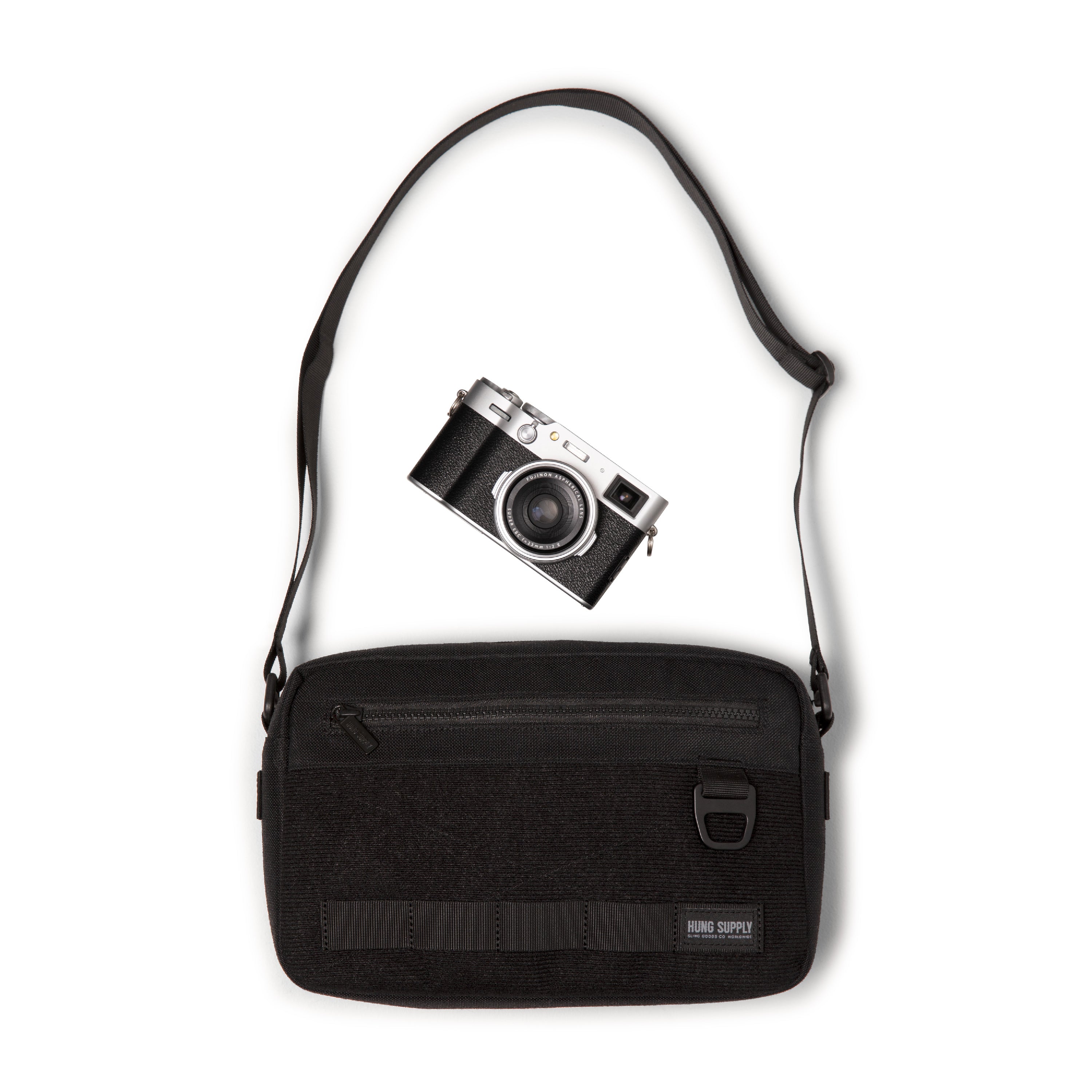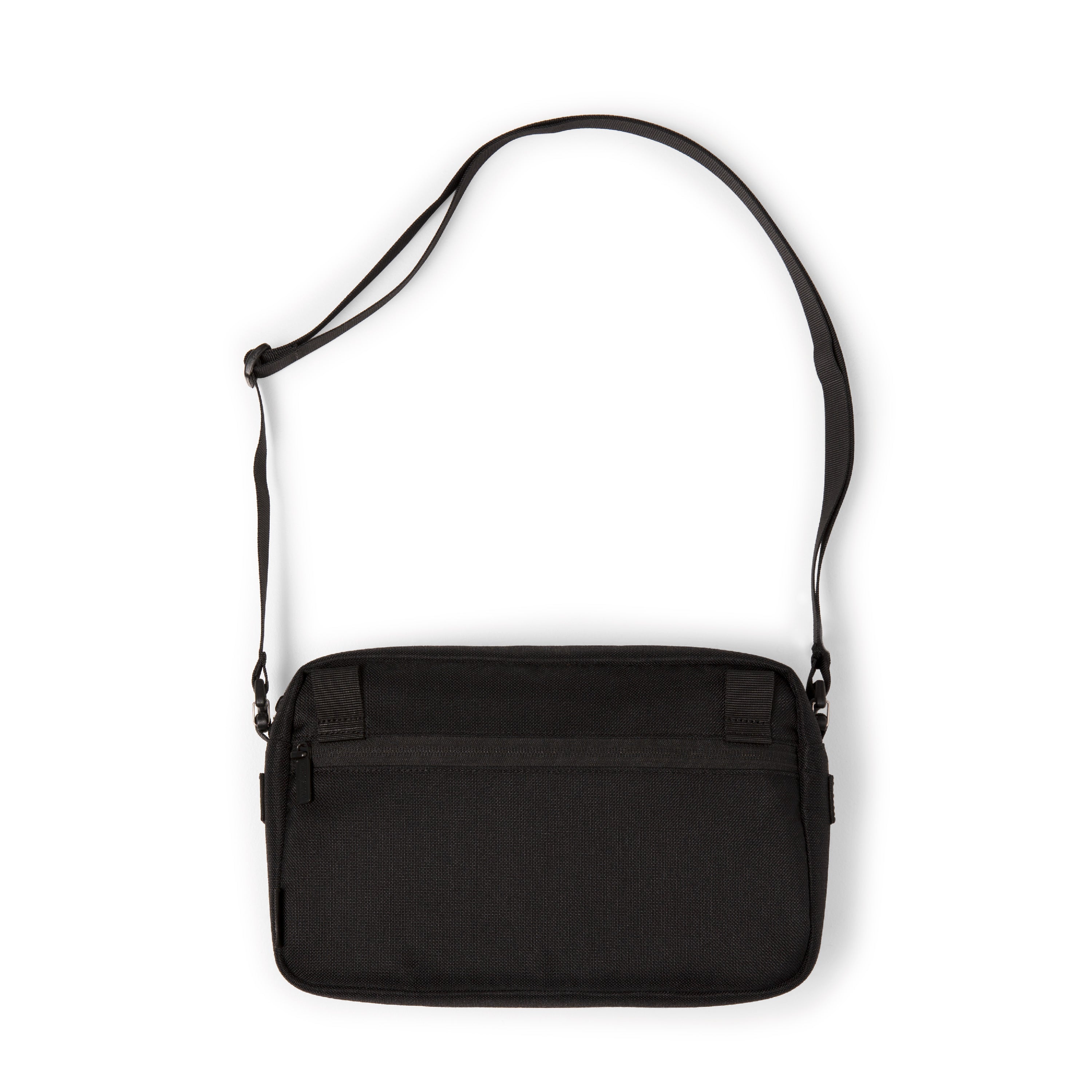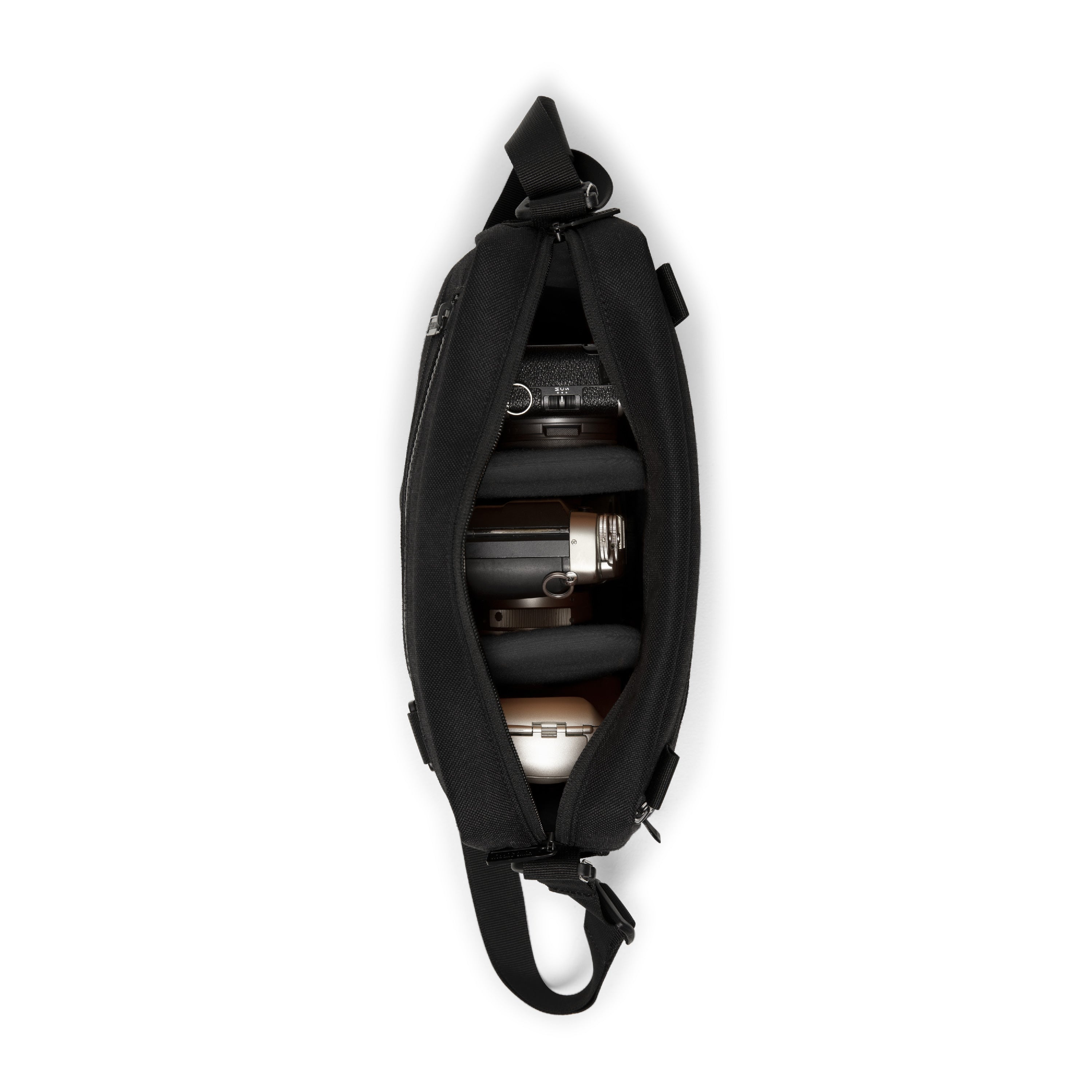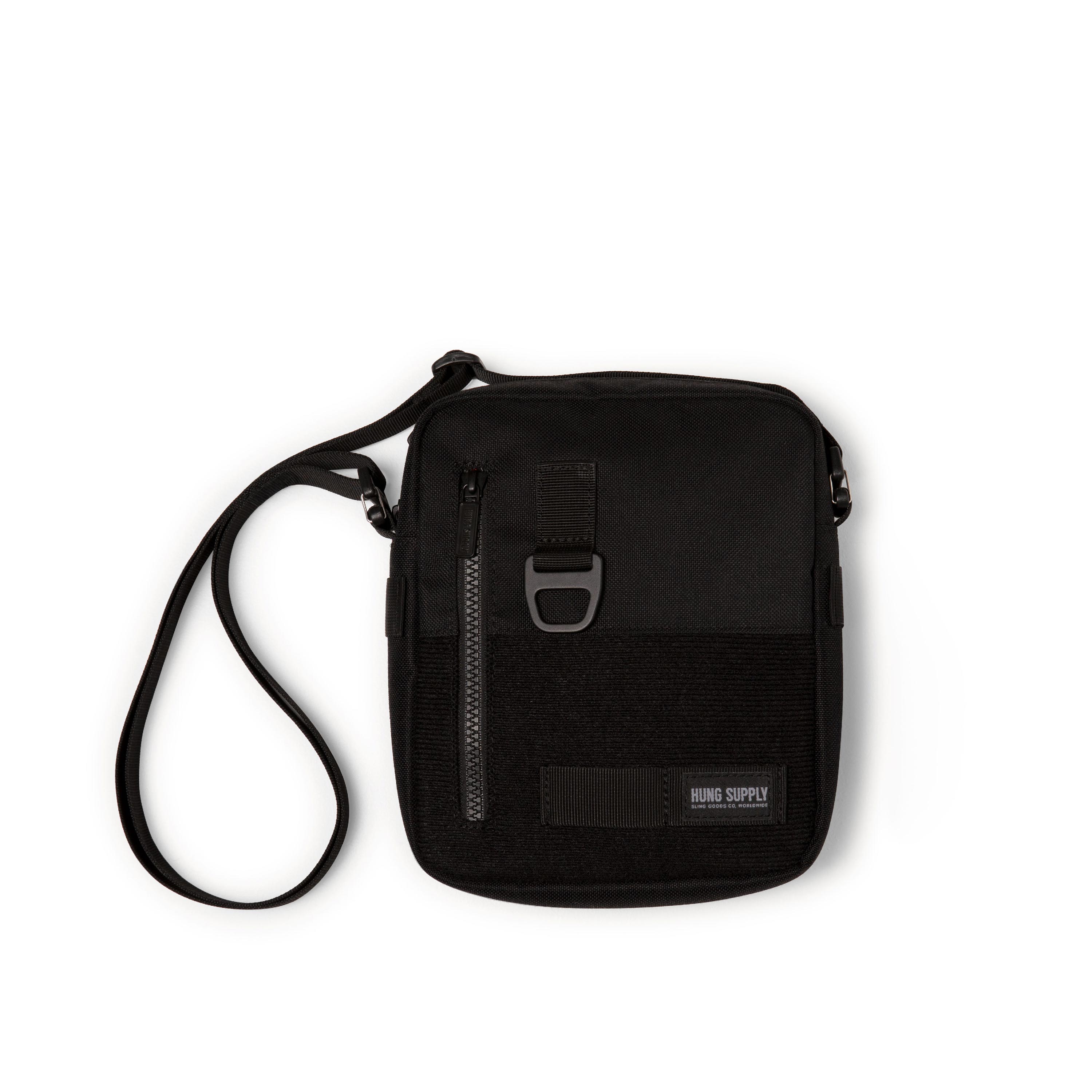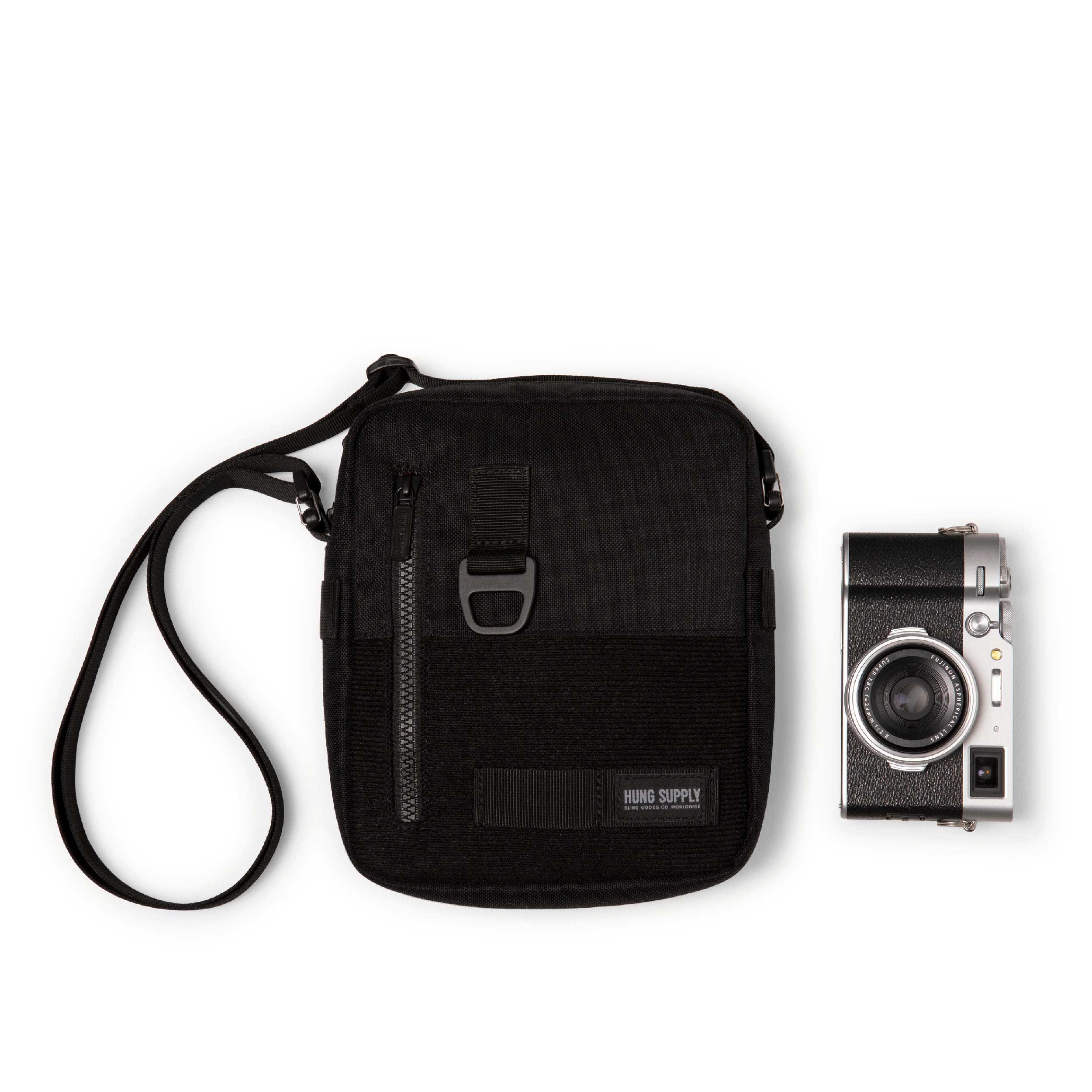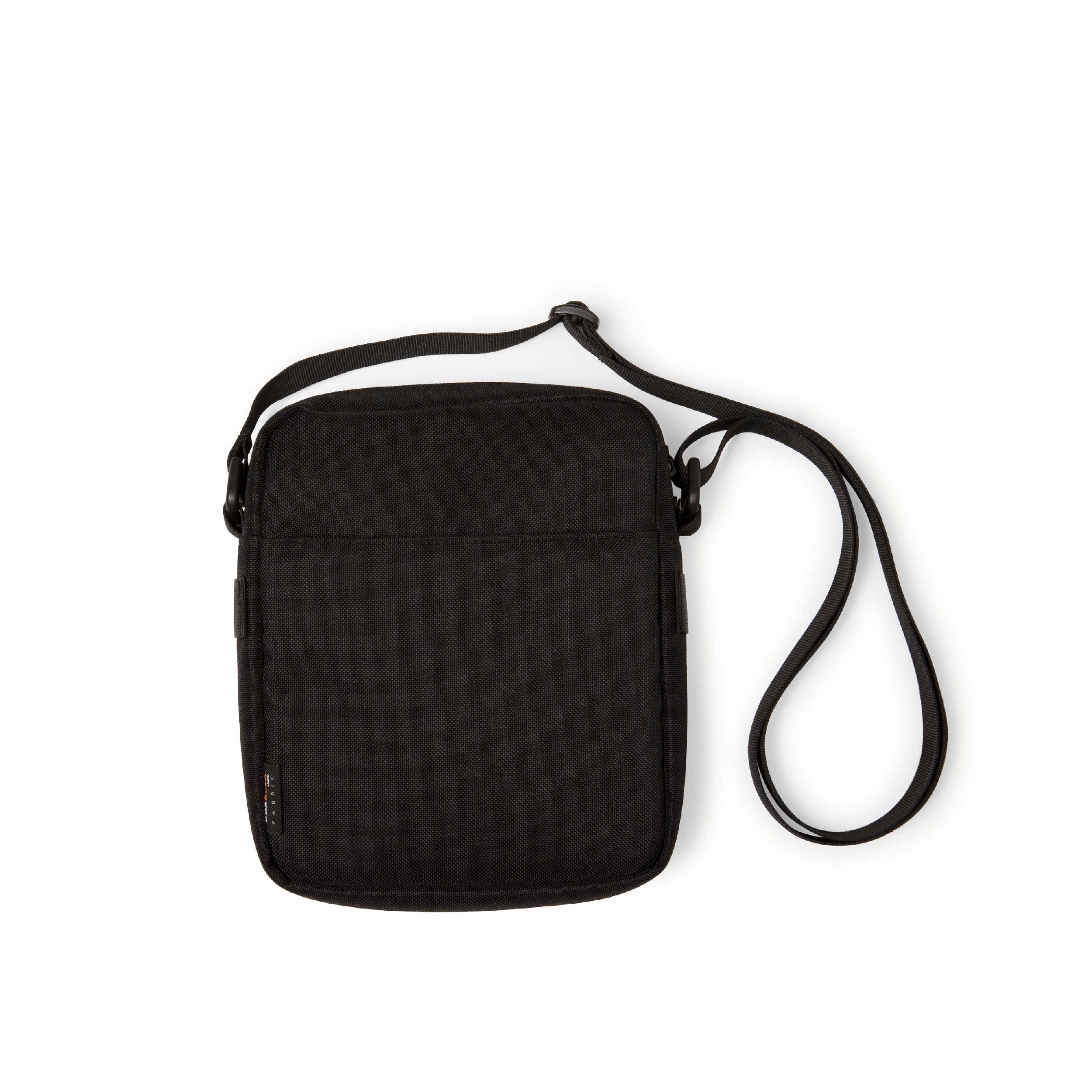We're back again with Bag Raid, our slightly intrusive series where we kindly ask our sharp-shooting friends to turn their camera bags inside out for us to rifle through their camera kit. This month, we're taking a peep into Jessie Dinan’s Midnight Black Sidewalk Sling.
Photos: Jessie Dinan / Interview: Lucy Lumen
Introducing Jessie Dinan, a die-hard Tri-X shooter hailing from Melbourne, Victoria. With an unwavering dedication to black-and-white photography, Jessie documents society's fringe dwellers, placing the weird and wonderful at the heart of her images.

Whether capturing the energy of NYC or the allure of small towns in NSW, a photograph by Jessie Dinan commands attention, and rightfully so. With the legendary Leica M6 in hand, Jessie's photographic vision ventures beyond convention, delving into underground subcultures, immortalising individuals who express themselves in unique ways, and capturing unusual scenes.
Curious to uncover what accompanies Jessie on these underground explorations, we asked for a peek inside her Sidewalk Camera Sling, along with a few probing questions to paint a fuller picture of the woman behind the lens.

BAG RAID W/ JESSIE DINAN
Leica M6 with a Zeiss Biogon T F/2 35mm Lens - Buying my Leica M6 ten years ago is the only good financial decision I’ve ever made in my life!
Leica sf20 Flash - I don’t usually use flash, but carry it with me just in case I wanna shoot at night.
Film - Kodak film holder loaded with 5 rolls of Kodak Tri-X. Easy to access, so I’m not wasting time with packaging.
More film - Another 5 rolls of Tri-X taken out of their boxes and left in their canisters. There have been times when I haven’t taken enough film, so I tend to overdo it now.
Sharpie - I always carry a sharpie if I need to write on the film or take notes.
Notepad - For writing down ideas or an email address in case people want a photo.
Phone, ID and bankcard. I try to travel as light as possible.
Lip Balm. Can’t live without it!

Give us the who, what, and where of Jessie Dinan!?
Hi there, I’m Jessie, a photographer based in Melbourne, Australia. I’ve travelled 43 times around the sun, I bet you're super jealous! I’m a mom to a 12-year-old cosplayer, a crazy chocolate Labrador, and a lizard. I’m lucky to be married to the love of my life who continues to support me in my art career while he does the 9 to 5.
What do you like to photograph and how do you describe your style?
My love for photography is centred on analog processes and printing in the darkroom, predominately in black and white. The work I create is focused on the people I meet and observe in everyday life. I love documenting subcultures and those that view the world through a different lens to social norms. Most people would find people on the outskirts or those belonging to subcultures uninviting or intimidating, yet in my experience I find these people to be incredibly kind and welcoming. This drives my fascination and motivates me to dig a little deeper to make work that represents them.
"Gritty" is the word I would use to best describe my style. I am a massive fan of grain – big shout out to the grain lovers out there! There aren't many of us. I’m always pushing my film; I love high contrast and don't like to shoot anything under 400 ISO because I'm stuck in my ways.


You and your family spent a few years living in New York City. Tell us about the experience of shooting on the street there.
It was an incredible experience living in New York, and to be honest, I didn't want to leave. I had never visited the city before, yet for some reason, I decided I wanted to pack up our house in Oz and move there with my husband and 3-year-old. It sounds totally wild, but we had the time of our lives in one of the greatest cities in the world.
I had no knowledge of the street photography genre before NYC, but I always carried my camera with me. Initially, I was photographing around New York more as a way to mark the time in our lives, collecting photographs like souvenirs. This changed quite quickly after discovering the street photography greats and the Howard Greenberg Gallery in Manhattan. I became inspired by the usual suspects: Winogrand, Levitt, Bruce Davidson, Arlene Gottfried, Mary Ellen Mark, and of course, the legend Robert Frank. I became much more interested in documenting the people and the energy of the streets, and that is what I continue to be drawn to to this day.
For me, street photography is one of the hardest genres to make successful images. Yet, in saying that, during my travels over the years, NYC would have to be the easiest city to shoot in. It’s super crowded, the light is beautiful, and there are endless possibilities to point your camera at. Being without my camera in New York was my worst nightmare.
The thing with street photography is that there are so many different variables; you have no control whatsoever, so you only have your instincts to rely on. It can also be extremely difficult being so vulnerable in public. It can open you up to quite a bit of abuse, and you do need to prepare yourself for that when you hit the pavement. Most of my experiences shooting in New York were positive, but I did receive my fair share of abuse, thankfully nothing violent. Those moments can really shake your confidence. The hardest part is not the abuse you cop; it's when you know you’ve really upset someone and caused them to have a shitty day.


Do you struggle to feel as inspired here in Australia as you have in NYC or other countries?
It was actually quite a struggle moving back to Australia after spending three incredible years living in NYC. Those years in New York really shaped my artistic practices; where I became incredibly fascinated with street and documentary photography. It’s where I refined my photography skills and developed my personal style. Of course, NYC is the Mecca for street photography, and after moving back to Australia, I found it extremely difficult to feel inspired to make images. Australia was what I had known all my life. There was nothing new or exotic that I thought I hadn't already encountered.
I really had to push myself to seek out the unfamiliar, a side of Australia that I hadn’t experienced, and somehow found myself at the Deni Ute Muster, of all places. Not exactly up my alley, but I was determined to explore outside my comfort zone. This ended up turning into a series and a zine titled 'Small Town Rodeo'. To me, this proves that if you're open to new experiences and get outside your comfort zone, the possibilities are endless.

You are a die-hard Tri-X shooter. What is it about that film that makes it your go-to?
I am, for sure! I’ve been using Tri-X for so long. I have my recipes and times all figured out to get the best contrast and tones to fit my style. I’m not sure if this is actually a good thing though, and it's probably about time I started to shake things up.
I’ve always been drawn to black and white images. There's that famous quote that is totally cliché, but I still love it - “When you photograph people in colour, you photograph their clothes. But when you photograph people in black and white, you photograph their souls!” Of course, you can capture souls, beauty, and the ugliness in the world however the hell you want! But to me, black and white has and always will have, that classic charm that I’m drawn to. I’m also a black and white darkroom printer; there is nothing quite like pulling a print out of the wash, it's a thing of beauty
You also develop at home. Is this an economic choice, an artistic one, or both?
This is definitely a creative choice for me. My background started off in printmaking, working on photographic etchings of the female form. I was really drawn to the process rather than the actual outcome of the work itself. This has always been central to my art; I enjoy the process and have complete and full creative control from beginning to end.
I'm the same way with my photography; I dev/scan my own negs and print my own prints. I can’t imagine doing it any other way. I’m very aware that this attitude and approach isn’t for everyone and potentially limits people from making a living through art and photography. But at the end of the day, I do this for myself. It's very important for me as an artist to have my own voice and not dilute it by making compromises. This might make me sound a little stuck up and possibly like a control freak, but at the end of the day, nobody cares more about your work than you do.


You are working with some pretty sweet gear there. Good thing you have a sling to keep it all safe. Tell us about the shooting experience using your Leica M6 and Hasselblad (is it 500c that you have, Jess?), and which one do you gravitate towards more often?
I am lucky to own some extremely beautiful gear. When I’m shooting on the streets, travelling, or at music festivals, my go-to without a doubt is my Leica M6 with a Zeiss Biogon 35mm lens. I’m a little bit of a Zeiss fan girl. My M6 is so damn reliable, and I’ve been using it for the past 10 years; I know this camera inside and out.
I think that’s something a lot of people don’t really do these days; they get so caught up in gear that they forget what it's used for. While I believe it's extremely important to experiment with your art and photography and develop your personal style, I also think it's just as crucial to get to know your gear or one camera. From my experience, this will give you so much more confidence, especially if you're shooting on the streets, documenting events, or taking street portraits. You don’t want to stop someone for a photo and spend 5 minutes trying to work out your camera settings or miss that epic shot because you took too long.
I also love to shoot with my Hasselblad 500cm. In my opinion, it is one of the most beautiful cameras ever made. I usually have the standard Zeiss Planar 80mm lens, but recently purchased a 150mm Zeiss Sonnar. I mostly use the Hassy for shooting portraits due to the size and weight of the camera. It can get really heavy on the neck, so I was thrilled to find that my sling from Hung Supply fitted the whole Hassy kit. From the camera body, 80mm lens, film back, and even the prism finder!

You have a new project called “Girls To The Front,” which is a rad zine showcasing women behind and in front of the camera. How did this project come about, and what’s in store for the upcoming issue of GTTF?
Girls To The Front zine was born out of a time when I was really struggling with my mental health. I began drawing from photographs I had taken at music festivals to help calm my mind. I thought they looked pretty cool combined with photographs and toyed with the idea of making a zine. Around the same time, I was listening to a lot of L7 and Bikini Kill. For those unfamiliar with Bikini Kill and front woman Kathleen Hanna, they had a massive impact not just on women and the girl punk genre, but on society as a whole. Kathleen Hanna, to me, is a trailblazer who made it okay to be, dress, and act however the hell you wanted. Her chanting of “Girls To The Front” during live performances became iconic moments in music history, making women feel safe in male-dominated spaces.
This is what motivated me to make zines. I wanted to create a community where we uplift and support women and non-gender-conforming individuals being unapologetically themselves. Girls To The Front zine is about looking and feeling how we want without conforming to society’s standards of beauty and behaviour.
After inviting other artists to collaborate on the project with me, it has become something I'm incredibly proud of. I’m currently working on issue 4, which will feature photography, stories, interviews, and collages. There's so much good stuff in the works, so I'm super excited to put this one out. Throughout this journey, I've come across countless talented and inspiring people, and I'm pretty sure I'll never run out of content.



Check out more of Jessie's incredible work below, or venture over to her website and grab a copy of Girls To The Front. Follow Jessie on Instagram: @jessnhermess.
A HUGE thank you to our friend Lucy Lumen for making this interview possible. Check out Lucy's photography, HERE, and follow her on IG: @lucy_lumen.












Grab a Midnight Black Sidewalk Camera Sling, HERE.











